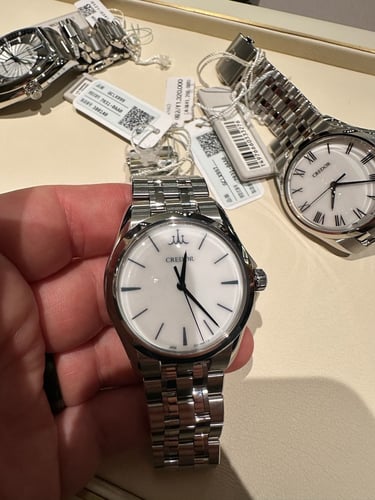
Tokyo • 東京 • とうきう
So you're planning a trip to Tokyo? Dive into our comprehensive Tokyo travel guide covering everything you need to know about Japan's capital and the must-do experiences awaiting you.
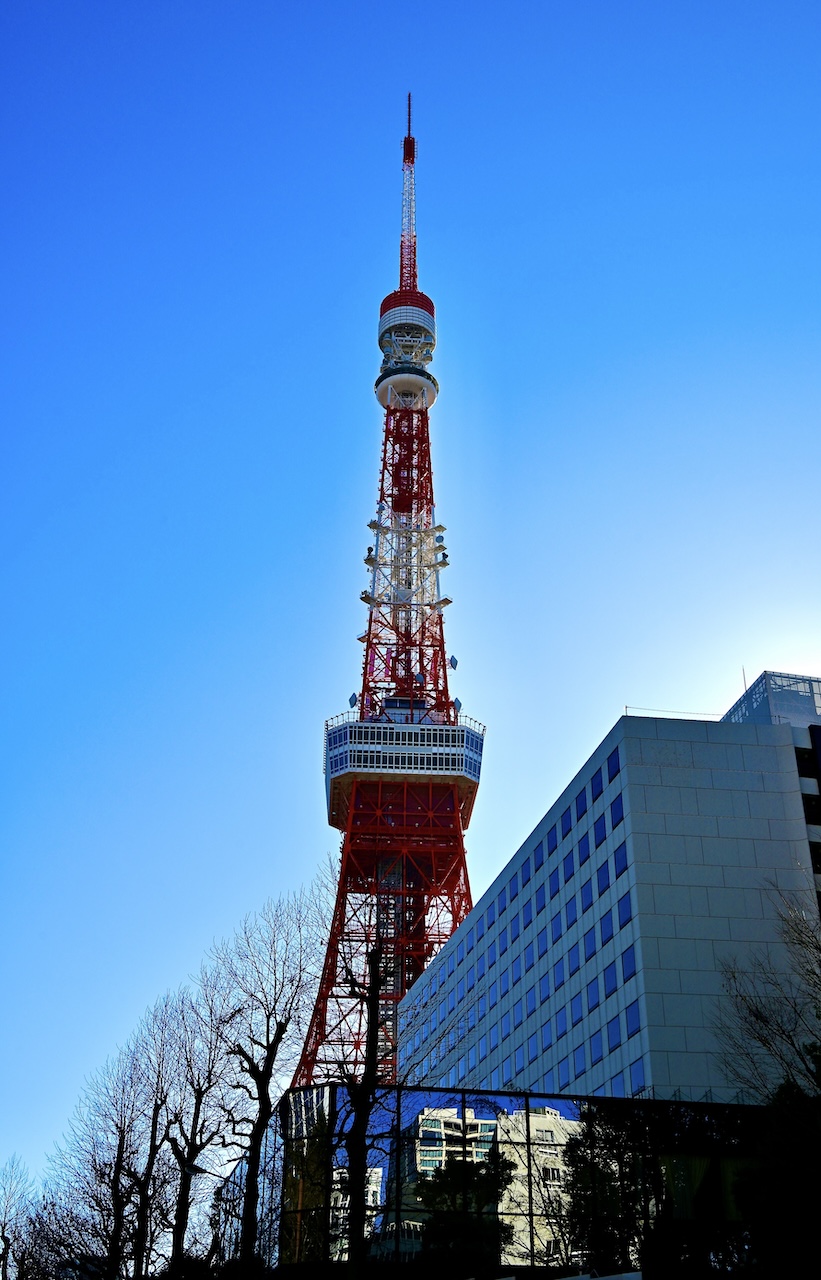
Tokyo Travel Guide
An Introduction
Tokyo (東京 orとうきう), the dynamic capital of Japan, boasts a rich history that spans centuries, evolving from a small fishing village known as Edo into the bustling metropolis it is today. Steeped in tradition yet a hub for cutting-edge technology, Tokyo seamlessly blends ancient temples and historic districts with modern skyscrapers and neon-lit streets. The city's enduring allure lies in its ability to offer a juxtaposition of the past and present, where visitors can explore historic sites like the Sensoji Temple in Asakusa and the Imperial Palace gardens, while also experiencing the vibrant energy of districts like Shibuya and Shinjuku. Tokyo's cultural diversity, culinary delights, and a myriad of attractions, from serene gardens to iconic landmarks like Tokyo Tower and the Meiji Shrine, contribute to its status as a popular tourist destination, inviting travelers to immerse themselves in a captivating blend of tradition and innovation.
Discover Tokyo's diverse offerings as you delve into research for your upcoming travels, uncovering lesser-known facts that add to your understanding of this vibrant city.
- Tokyo is one of the most populous cities in the world, with a metropolitan population exceeding 40 million people.
- Tokyo became the capital of Japan in 1868, marking the shift from Kyoto. This change was part of the Meiji Restoration, a period of major political and social transformation in Japan.
- The name "Tokyo" literally means "Eastern Capital." It reflects the city's geographical location to the east of Kyoto, which was the capital before Tokyo.
- The Imperial Palace in Tokyo is built on the site of the Edo Castle, which was the residence of the Tokugawa shogun during the Edo period. Edo is the former name of Tokyo.
Tokyo Travel Guide: Quick Tips
Tokyo Travel Guide: Can't-Miss Attractions
Embark on a journey through Tokyo's essential sights, ranging from the cultural wonders of the Tokyo National Museum and the timeless Sensō-ji Temple to the iconic Shibuya Crossing, the architectural spectacle of Tokyo Tower, the serene Meiji Shrine, and an array of other captivating landmarks that collectively showcase the diverse facets of this dynamic metropolis.
We've highlighted all the attractions we visited and adored with the universal symbol of love, ♡.
- Tokyo National Museum: ♡ The Tokyo National Museum, Japan's premier cultural institution located in Ueno Park, is an indispensable must-visit, offering a captivating journey through the nation's rich history and artistic heritage with its extensive collection spanning traditional crafts, ancient sculptures, and samurai armor. Closed Mondays.
- Sensō-ji Temple: ♡ Sensō-ji Temple, Tokyo's oldest and most revered Buddhist temple located in Asakusa, is an unmissable cultural gem, drawing visitors with its historic significance, vibrant Nakamise-dori shopping street, and the iconic Thunder Gate, providing a profound glimpse into Japan's spiritual heritage.
- Meiji Jingu Shrine: Meiji Jingu Shrine, nestled in the heart of Shibuya, offers a serene retreat amidst lush greenery and towering torii gates, providing a spiritual haven and a glimpse into Japan's imperial history and Shinto traditions.
- Shibuya Scramble Crossing: Shibuya Scramble, Tokyo's bustling pedestrian crossing, embodies the vibrant energy of the city, where the synchronized chaos of thousands crossing simultaneously creates an iconic and electrifying Tokyo experience.
- Shibuya Sky: ♡ Shibuya Sky, perched atop the Shibuya Scramble Square, offers panoramic views of the city skyline and the iconic Shibuya Crossing, providing a breathtaking and immersive experience of the metropolis below. Advance reservations are recommended, particularly if you are looking to visit Shibuya Sky for sunset.
- Tokyo Tower: Tokyo Tower, a symbolic landmark of the city, offers both an iconic presence on the Tokyo skyline and an immersive experience within its observation decks, where panoramic views showcase the metropolis below; visible from afar, it stands as an emblem of Tokyo's modernity and architectural marvels.
- Shinjuku Gyoen National Garden: ♡ Shinjuku Gyoen National Garden is a picturesque oasis blending Japanese, English, and French garden styles. The garden offers a serene escape from the bustling city with cherry blossoms in spring, diverse landscapes, and a tranquil atmosphere. It is a must-visit destination for nature lovers and those seeking a peaceful retreat in the heart Tokyo. Advance reservations are required on some dates during peak cherry blossom season (March/April).
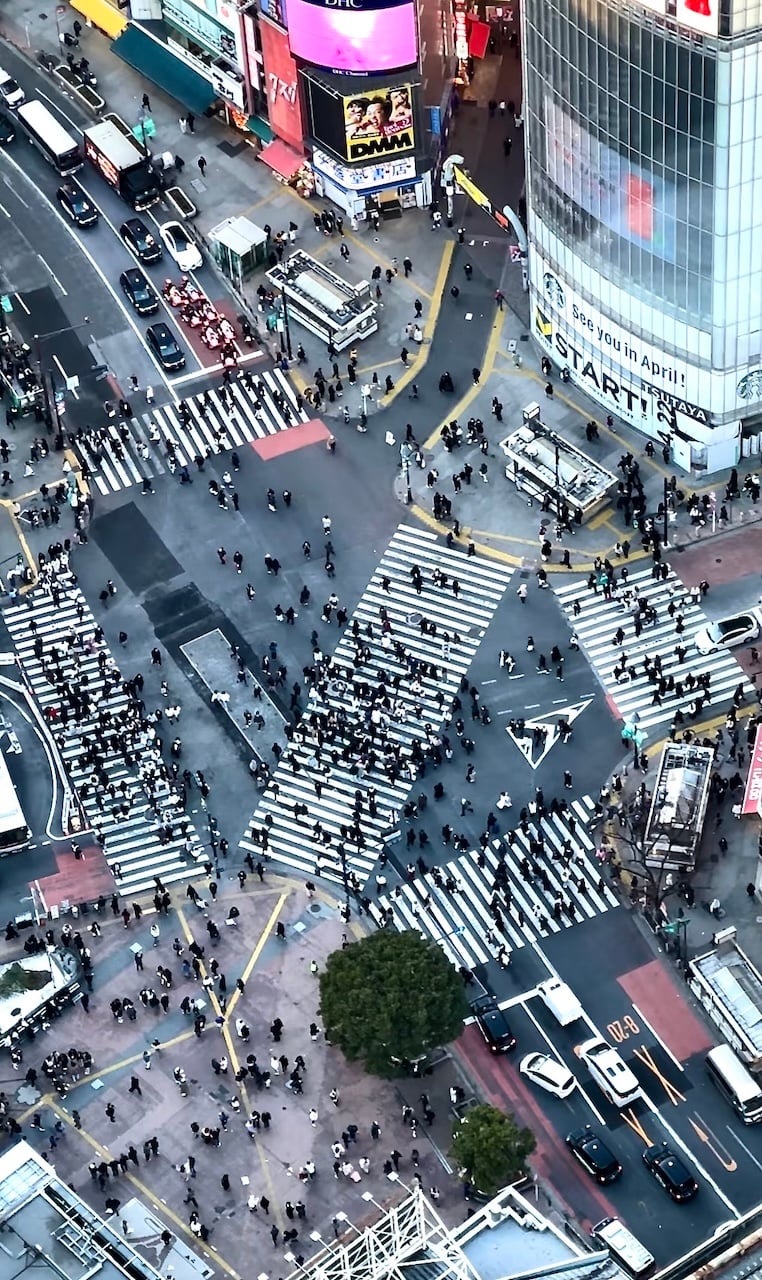
Tokyo Travel Guide: Landmarks
Imperial Palace
The Imperial Palace in Tokyo, situated on the grounds of the former Edo Castle, serves as the primary residence of the Emperor of Japan. While the inner palace area is not open to the public, the East Gardens offer a picturesque experience with historical ruins, the iconic Nijubashi Bridge, and cherry blossom viewing during the spring. Guided tours are available, and the palace hosts ceremonial events, including the Emperor's birthday celebration, attracting visitors for its cultural and historical significance.
In order to visit the palace grounds on a guided tour, you must have advance reservations. Bookings can be made on the Imperial Household Agency website.
Shibuya Scramble Crossing
The Shibuya Scramble Crossing in Tokyo is one of the world's busiest pedestrian crossings, located outside Shibuya Station. It's characterized by a massive simultaneous pedestrian crossing when traffic signals halt vehicles in all directions. This iconic, yet chaotic scene is emblematic of Tokyo's bustling urban life and is a popular tourist attraction, offering a unique and vibrant experience amidst the surrounding commercial and entertainment district of Shibuya.
There are a number of spots near the Shibuya Scramble Crossing that offer great and free aerial views of the crosswalk. Our favorite is the Shibuya Station bridge which connections the JR Shibuya Station with the Shibuya Mark City shopping center.
Top 7 Viewing Spots for Shibuya Scramble Crossing >
Tokyo Tower
Tokyo Tower, inspired by the Eiffel Tower, is a 333-meter landmark completed in 1958. It features two observation decks offering panoramic views, vibrant lighting displays at night, and a base called FootTown with shops and attractions. Beyond its broadcasting role, Tokyo Tower symbolizes Japan's post-war resurgence and remains an iconic structure in Tokyo's skyline.
More information about visiting Tokyo Tower, including opening hours and ticket prices, can be found on the Tokyo Tower website.
Tokyo Skytree
Tokyo Skytree is a prominent landmark and broadcasting tower located in the Sumida Ward. Standing at a height of 634 meters (2,080 feet), it is the tallest tower in Japan and one of the tallest structures in the world.
Completed in 2012, Tokyo Skytree serves as a broadcasting tower for television and radio signals, as well as a popular tourist attraction offering panoramic views of the city from its observation decks. There is a cost savings for purchasing ticket in-advance. Information regarding ticket prices and opening hours can be found on the Tokyo Skytree website.
In addition to its observation decks, Tokyo Skytree features a shopping complex (Tokyo Solamachi) at its base, offering a wide range of shops, restaurants, and entertainment facilities for visitors to enjoy.
Tokyo Metropolitan Government Building Observation Deck
The Tokyo Metropolitan Government Building Observation Deck, also known as Tokyo City Hall, is a popular free observation deck located in Shinjuku. It consists of two towers, each standing 243 meters (798 feet) tall, and offers stunning panoramic views of Tokyo.
Visitors can access the observation decks on the 45th floor of either tower via high-speed elevators. From the observation decks visitors can enjoy incredible views of Tokyo's skyline, including iconic landmarks such as Tokyo Tower, Tokyo Skytree, and Mt. Fuji on clear days.
Shibuya Sky ♡
Shibuya Sky is a spectacular observation deck situated atop the Shibuya Scramble Square building, offering unparalleled panoramic views of Tokyo. With floor-to-ceiling windows, an open-air deck, and immersive multimedia displays, it was our favorite observation deck in the city, providing a captivating experience that perfectly complements the energetic atmosphere of Shibuya below. If you're lucky, you might even be able to see Mt. Fuji on a clear day!
The outdoor observation deck can be extremely windy. For safety reasons, visitors are prohibited from bringing hats, purses, or any other items except for cameras or phones outside. Lockers are available, but you'll need a ¥100 coin to rent one.
Shibuya Sky is a highly popular attraction, and it's advisable to purchase tickets online in advance, especially for sunset times, as they tend to sell out quickly. Tickets can be purchased on the Shibuya Scramble Square website.
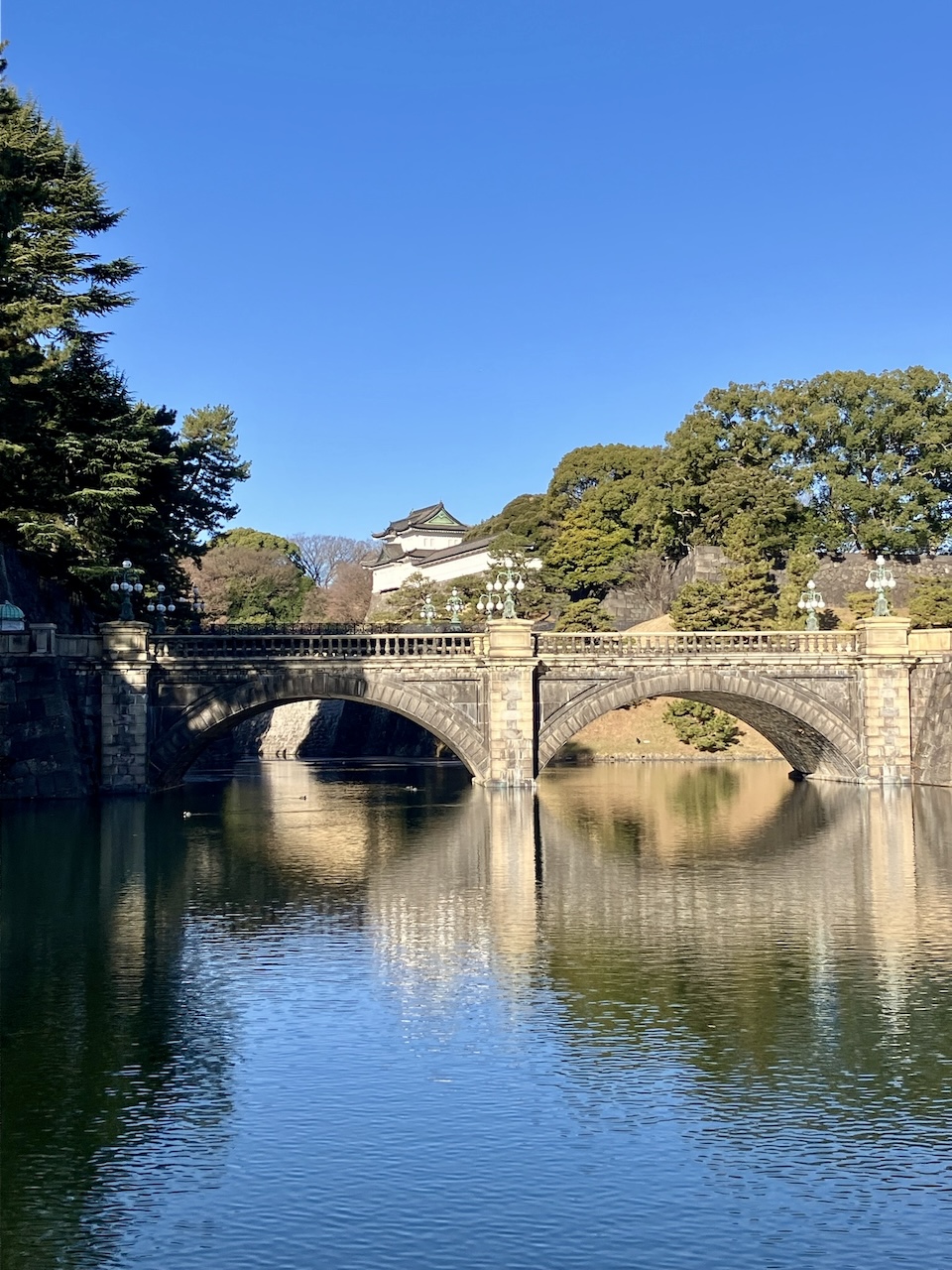
Tokyo Travel Guide: Top Museums
Tokyo is home to a diverse range of museums, offering cultural, historical, and artistic experiences. The museum closing days in Tokyo can vary, but are most typically Mondays. It's essential to check the specific closing days for each museum you plan to visit, as this information can be found on their official websites. Many museums in Tokyo may also close on holidays.
For the art aficionado:
- National Museum of Modern Art (MOMAT): The National Museum of Modern Art, Tokyo (MOMAT), centrally located near the Imperial Palace, is a premier institution dedicated to Japanese modern and contemporary art. Renowned for its extensive collection spanning the Meiji era to the present day, MOMAT showcases paintings, sculptures, prints, and photography by notable artists like Yokoyama Taikan and Kishida Ryusei. Following a recent renovation, the museum's modern design enhances the exhibition spaces, providing an inviting environment. With educational programs, temporary exhibitions, and a focus on engaging visitors of all ages, MOMAT offers a comprehensive exploration of Japan's rich artistic heritage, making it a must-visit for art enthusiasts.
- Asakura Museum of Sculpture: The Asakura Museum of Sculpture, located in Taito, is dedicated to the works of Fumio Asakura, a prominent Japanese sculptor renowned for his blend of traditional and Western styles. The museum features an extensive collection of Asakura's sculptures, including bronze statues and reliefs, providing insight into his mastery of form and expression. Visitors can explore not only the main exhibition space but also Asakura's preserved residence, offering a glimpse into the artist's life and creative process. Set within a serene Japanese garden, the museum provides a tranquil environment for art appreciation.
- Mori Art Museum: Perched atop Roppongi Hills Mori Tower, the Mori Art Museum in Tokyo is a dynamic institution dedicated to contemporary art. Known for its sleek design, the museum hosts rotating exhibitions that showcase a diverse range of works by both Japanese and international artists, exploring themes of modern culture and society. Collaborating with leading institutions worldwide, the museum provides a platform for established and emerging artists alike. Beyond art, visitors can enjoy panoramic views of Tokyo from the Sky Deck.
- The National Museum of Western Art: The National Museum of Western Art, located in Ueno Park, hosts a significant collection of Western art from the Renaissance to the early 20th century. Visitors can explore galleries featuring masterpieces by renowned artists like van Gogh and Monet, alongside temporary exhibitions. The building itself is an important landmark in Japan, designed by renowned French architect Le Corbusier. The building is a symbol of the resumption of diplomatic relations between France and Japan after World War II.
- Yayoi Kusama Museum: The Yayoi Kusama Museum in Tokyo is a museum dedicated to showcasing the captivating works of contemporary artist Yayoi Kusama. Located near Shinjuku Station, the museum features rotating exhibitions of Kusama's iconic polka-dot patterns, Infinity Mirror Rooms, and immersive installations. Admission is by advance reservation only, and visitors are required to book tickets in advance through the official website.
- Sumida Hokusai Museum: The Sumida Hokusai Museum, located in Tokyo's Sumida Ward, is dedicated to the life and works of the renowned Japanese artist Katsushika Hokusai (1760–1849). Hokusai is best known for his iconic woodblock print series "Thirty-Six Views of Mount Fuji," which includes the famous print "The Great Wave off Kanagawa" (on display at the Metropolitan Museum of Art in New York City). The museum houses a diverse collection of his woodblock prints, paintings, and sketches.
- Le Forum at Maison Hermès Ginza:
Le Forum at Maison Hermès is a cultural space located in Ginza. It is part of the larger Maison Hermès building, which houses a combination of retail spaces, exhibition areas, and event venues. Le Forum specifically serves as a hub for various cultural activities, including art exhibitions, performances, workshops, and talks.
Le Forum often hosts free art exhibits, allowing visitors to experience contemporary art without any admission fee. These exhibitions showcase a diverse range of artwork from both established and emerging artists, covering various mediums such as painting, sculpture, photography, and multimedia installations. To see information regarding current and upcoming exhibits, as well as opening hours, please visit the Hèrmes website.
For the history lover:
- Tokyo National Museum: ♡ The Tokyo National Museum, situated in Ueno Park, is Japan's oldest and largest museum, dedicated to preserving and showcasing the nation's cultural heritage. Home to a vast collection, the museum spans a wide range of artistic genres, including traditional Japanese arts and crafts, ancient sculptures, samurai armor, and exquisite ceramics. Visitors can explore the meticulously curated exhibits that span Japan's extensive history, from ancient times to the modern era. If you only have time to visit one museum in Tokyo, this is the one to visit, providing an unparalleled insight into the nation's cultural richness and history.
- Edo-Tokyo Museum: The Edo-Tokyo Museum, located in the Ryogoku district of Tokyo, offers a captivating journey through the city's rich history from the Edo period to the present day. The museum's immersive exhibits vividly depict life in old Edo, highlighting the cultural, social, and technological transformations that shaped the metropolis. Visitors can explore intricate dioramas, life-sized replicas, and interactive displays, gaining insights into the evolution of Tokyo from a small fishing village to a vibrant modern capital. With a diverse range of artifacts, multimedia presentations, and educational programs, the Edo-Tokyo Museum provides a comprehensive and engaging experience for those eager to understand the city's dynamic history and cultural heritage.
For families:
- teamLab Planets Tokyo: teamLab Planets is an immersive digital art museum located in Tokyo, offering a unique and interactive artistic experience. Created by the interdisciplinary art collective teamLab, the museum showcases a series of awe-inspiring digital installations that merge technology, art, and the viewer's participation. Visitors can explore diverse environments, from vibrant, illuminated landscapes to interactive water installations that respond to movement. There is a portion of the museum that requires you to walk through water, so take care to dress accordingly. Due to its popularity, advance ticket purchase is required to secure entry, and visitors are encouraged to check the official teamLab website for the latest information on exhibitions, timings, and ticket availability.
- teamLab Borderless Tokyo: teamLab Borderless Tokyo is an immersive digital art museum located in Azabudai Hills, Tokyo. Operated by the art collective teamLab, the museum offers a boundary-defying experience where art and technology merge seamlessly to create an otherworldly environment. Spread across vast interconnected spaces, the exhibits at teamLab Borderless utilize cutting-edge digital technology to project dynamic and interactive visuals. Visitors can explore rooms filled with ever-changing, immersive displays that respond to human presence and movement. The museum transcends traditional notions of art, providing a sensory-rich journey through mesmerizing landscapes of light, color, and sound. Due to its popularity, advance ticket purchase is required to gain entry, and visitors are encouraged to check the official teamLab website for the latest information on exhibitions, timings, and ticket availability.
- Ghibli Museum: The Ghibli Museum is a whimsical and enchanting destination dedicated to the world of Studio Ghibli, the renowned Japanese animation film studio. Designed by Hayao Miyazaki, the co-founder of Studio Ghibli, the museum itself is a work of art, featuring a unique and fantastical architecture. Inside the museum, visitors can explore a variety of exhibition rooms and interactive displays showcasing the creative process behind Studio Ghibli's beloved animated films. The museum's enchanting atmosphere and attention to detail make it a magical experience for fans of all ages. Tickets are not available for purchase at the museum and must be purchased through authorized vendors in advance.
- National Museum of Nature & Science: The National Museum of Nature and Science, located in Ueno Park, offers extensive exhibits on natural history, astronomy, geology, and technology. Visitors can explore galleries showcasing fossils, minerals, flora, and fauna, as well as enjoy planetarium shows.
- Ueno Zoo: ♡ Ueno Zoo, located in Tokyo's Ueno Park, is Japan's oldest and most famous zoo. It's renowned for its diverse collection of animals from around the world and its conservation efforts. One of the major attractions at Ueno Zoo is its giant panda exhibit. As of January 2024, Ueno Zoo is home to four giant pandas: the parents, Ri Ri and Shin Shin, along with their adorable twin cubs, Xiao Xiao and Lei Lei. Tickets for Ueno Zoo are very budget-friendly, making it easy to drop by and greet the giant pandas with a "konnichiwa" or spend a full day seeing all the animals.

Tokyo Travel Guide: Popular Temples & Shrines
While Tokyo is dotted with countless temples and shrines, we've curated a list of some of the most popular ones for visitors to explore in the region.
Sensō-ji Temple ♡
Sensō-ji Temple is Tokyo's oldest and most renowned Buddhist temple, located in Asakusa. Founded in the 7th century, the temple features a majestic gate called Kaminarimon, a bustling shopping street known as Nakamise-dori, and the main hall where visitors can experience traditional rituals. Sensō-ji is an icon of Tokyo's cultural and historical heritage and remains a popular destination for both locals and tourists.
Sensō-ji Temple honors the bodhisattva Kannon, also known as Guanyin in Chinese Buddhism. Kannon is revered as the goddess of mercy and compassion in Buddhist tradition, making Sensō-ji a significant pilgrimage site for those seeking blessings, healing, and spiritual guidance.
Meiji Jingu Shrine
Meiji Jingu Shrine, nestled in Shibuya is a Shinto shrine dedicated to Emperor Meiji and Empress Shoken. Surrounded by a lush forest, the shrine offers a serene escape from the bustling city. Emperor Meiji played a pivotal role in the modernization of Japan during the Meiji Restoration in the late 19th century, transitioning the country from a feudal society to a modern nation. The shrine, established in 1920, serves as a symbol of gratitude and reverence for the imperial couple's contributions to Japan. It stands as a place of Shinto worship, cultural preservation, and a serene retreat within Tokyo, surrounded by a dense forest that provides a peaceful oasis in the heart of the city. Visitors often engage in traditional rituals, seeking blessings for personal well-being, success, and good fortune.
Ueno Tōshō-gū Shrine
Ueno Tōshō-gū Shrine is located in Ueno Park. It is dedicated to Tokugawa Ieyasu, the founder of the Tokugawa Shogunate, who played a crucial role in shaping Japan's history by uniting the feudal domains. The shrine is known for its beautiful peony garden that is only open twice a year to the public - January through mid-February and mid-April through mid-May. The inside of the shrine, itself, is closed to the general public.
Gotokuji Temple
Gotokuji Temple is a historic Buddhist temple located in Setagaya. It is known as the birthplace of the "maneki-neko" or beckoning cat figurine, considered a symbol of good luck and prosperity in Japanese culture.
The temple grounds feature numerous stone and ceramic statues of beckoning cats, creating a unique and charming atmosphere. The temple itself is also known for its association with the Tokugawa clan, one of the most influential samurai families in Japanese history.
Kameido Tenjin Shrine
Kameido Tenjin Shrine is a Shinto shrine located in the Kameido neighborhood of Tokyo, near the Tokyo Skytree. It is dedicated to Sugawara no Michizane, a historical figure who is revered as the deity of learning and scholarship. The shrine is particularly popular among students seeking blessings for success in their studies.
One of the most striking features of Kameido Tenjin Shrine is its beautiful arched bridge, known as the "Drum Bridge" (Taiko-bashi), which spans a pond filled with Japanese koi fish. Visitors can stroll across the bridge while enjoying views of the pond and the shrine's surrounding garden, which is especially picturesque during the blooming season of wisteria flowers in late April and early May. The shrine is also home to plum trees which bloom from February to early March.
Top Etiquette Tips for Visiting Shrines & Temples in Japan >
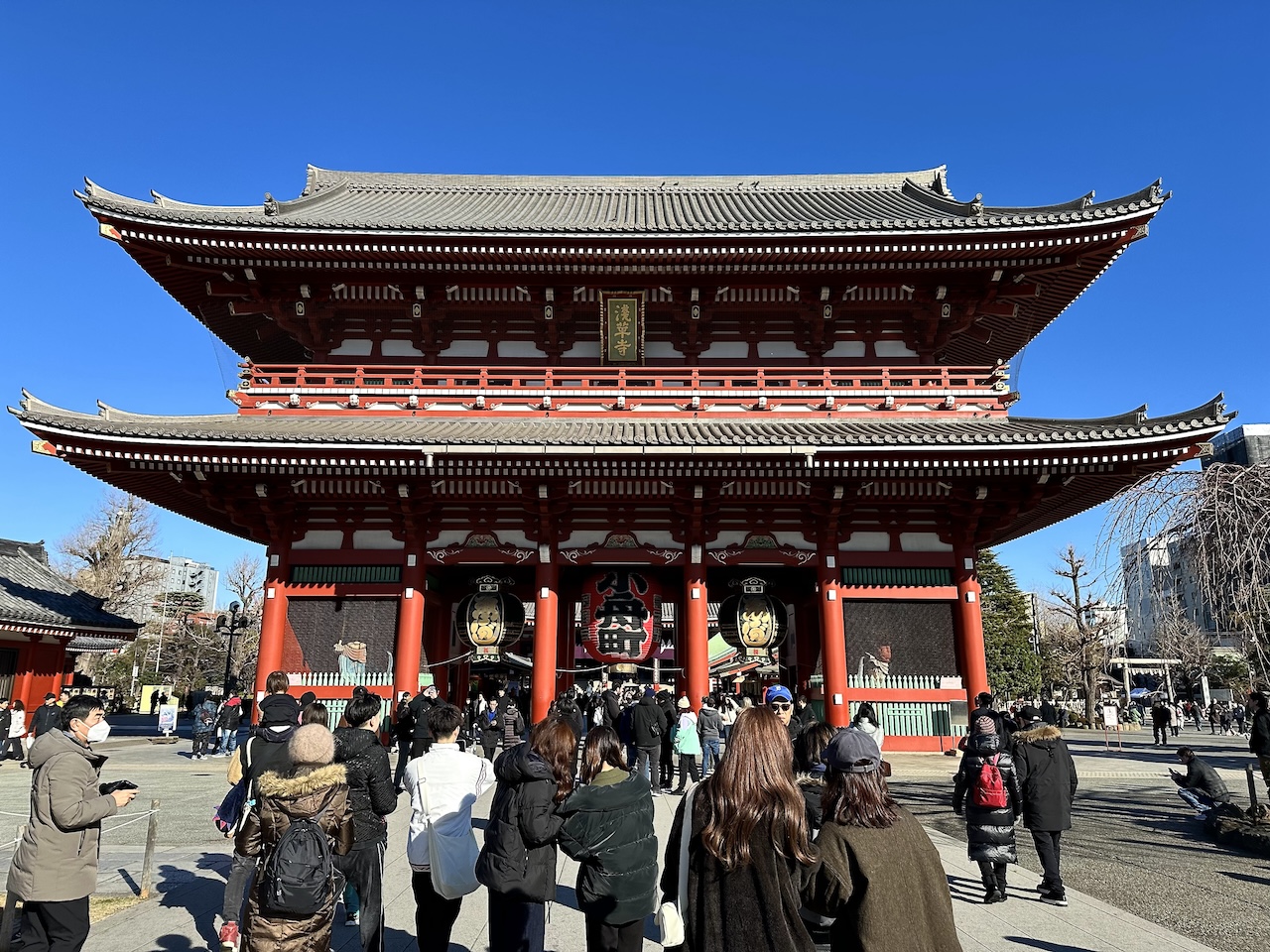
Tokyo Travel Guide: Gardens & Parks
Shinjuku Gyoen National Garden ♡
Shinjuku Gyoen National Garden, nestled in the vibrant Shinjuku district of Tokyo, is a captivating blend of three distinctive garden styles – Japanese traditional, English landscape, and French formal. This expansive oasis provides visitors with a serene escape from the urban hustle, offering a journey through meticulously landscaped ponds and bridges in the traditional Japanese garden, followed by the open lawns and large trees of the English landscape section, and the symmetrical patterns and elegant flower beds of the French formal garden. There are a number of cafes, restaurants, and traditional tea houses within the gardens. A greenhouse showcasing tropical plants and beautiful flowers is also on site and included with your park admission.
The park transforms with the seasons, becoming a popular spot for cherry blossom viewing in spring. Information regarding opening hours and admission cost can be found on the Ministry of the Environment website.
Advance reservations are required for entry to Shinjuku Gyoen National Garden on certain days during peak cherry blossom season (March/April); please check the Shinjuku Gyoen National Garden website for further details.
Hamarikyu Gardens ♡
Hamarikyu Gardens, located in Tokyo's Chuo Ward (near the Tsukiji Outer Market), is a scenic Japanese garden with a rich history dating back to the Edo period. Once a feudal lord's residence and duck hunting grounds, the garden was later transformed into an imperial villa. It features a large tidal pond, historic tea house, charming footbridges, and seasonal flower displays. The teahouse, named Nakajima-no-Ochaya, offers traditional tea ceremonies and is a highly recommended stop. Hamarikyu Gardens provides a tranquil escape amidst the modern cityscape, making it a popular destination for both locals and visitors seeking natural beauty and cultural immersion.
For information regarding opening hours and admission costs, please check the Hamarikyu Gardens website.
Koishikawa Korakuen
Koishikawa Korakuen is a traditional Japanese garden located in Bunkyo. Dating back to the early Edo period, the garden is renowned for its scenic beauty and meticulous design that incorporates elements of both Chinese and Japanese landscapes. Koishikawa Korakuen features ponds, walking paths, teahouses, and a variety of seasonal flora. Noteworthy attractions include Engetsukyo, a moon-viewing bridge, and Daisensui, a large pond that reflects the surrounding landscape. The garden is admired for its harmony, balance, and the careful integration of natural and artificial elements. Visitors can enjoy a serene retreat within the heart of Tokyo while appreciating the Edo-era charm of Koishikawa Korakuen.
Ueno-koen
Ueno Park, or Ueno-koen, is a spacious public park in Tokyo, Japan, renowned for its cultural attractions, cherry blossoms, and recreational spaces. Within Ueno Park, there are some notable attractions including:
-
Ueno Zoo: Established in 1882, the Ueno Zoo is Japan's first zoo and home to a diverse range of animals, including giant pandas.
-
Shinobazu Pond: A large pond within the park featuring boat rentals and picturesque views. In spring, lotus flowers bloom, creating a beautiful landscape.
-
Kiyomizu Kannon-do Temple: A historic Buddhist temple known for its veranda with panoramic views of the surrounding area.
-
Toshogu Shrine: Dedicated to Tokugawa Ieyasu, the founder of the Tokugawa shogunate, this shrine is rich in historical significance. This shrine is also home to a peony garden, including a spectacular garden of winter peonies, visible from January to mid-February.
-
Museums: Ueno Park is home to several museums, including the Tokyo National Museum, the National Museum of Nature and Science, and the National Museum of Western Art.
-
Cherry Blossom Festival: During cherry blossom season, Ueno Park becomes one of Tokyo's most popular hanami (flower viewing) spots, attracting crowds to admire the blooming cherry trees.
7 Most Beautiful Japanese Gardens in Tokyo >
Best Places to See Cherry Blossoms in Tokyo >
Japanese Gardens in Tokyo for Every Season >
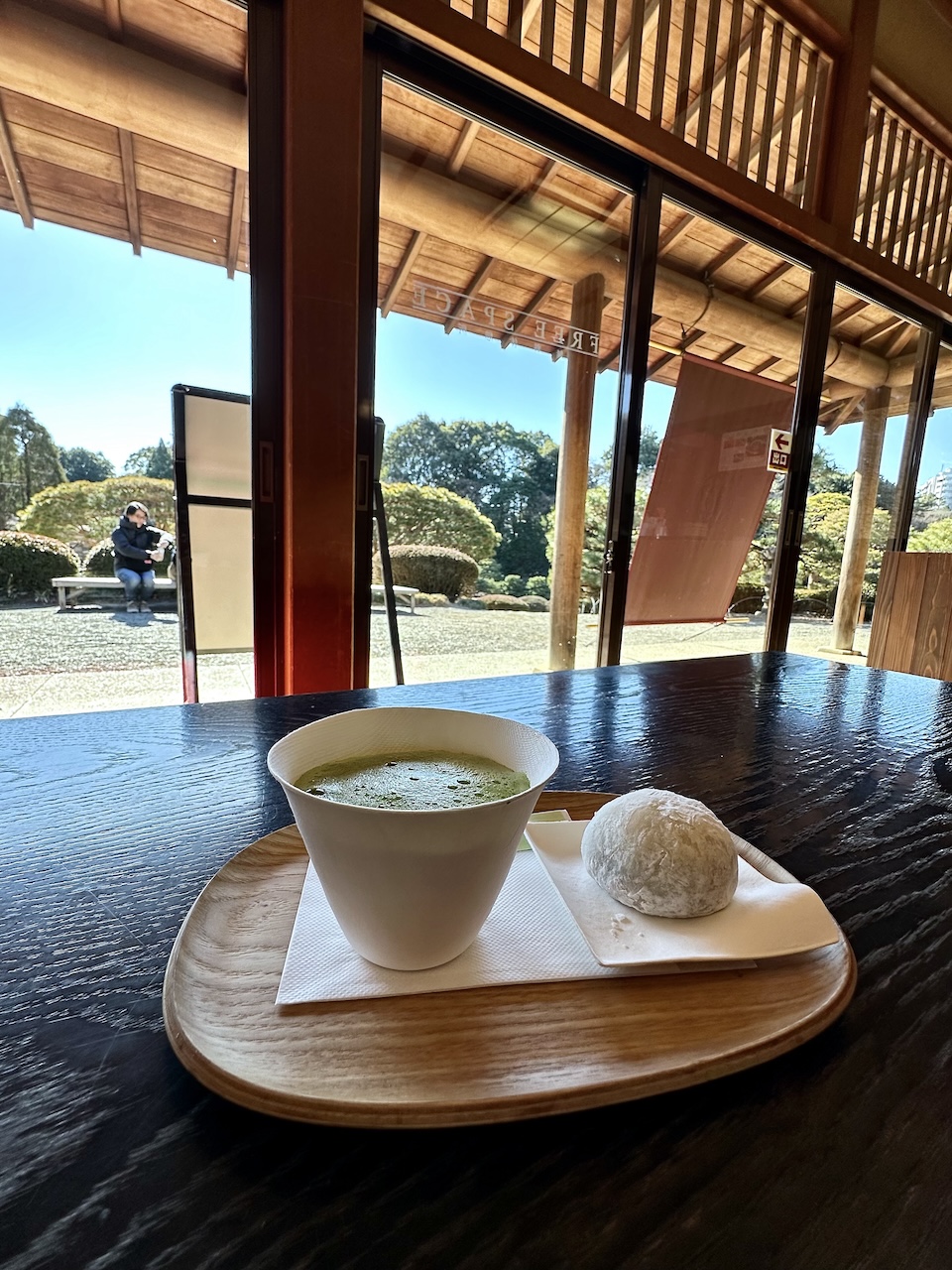
Tokyo Travel Guide: A Taste of Tokyo
Tokyo boasts a diverse and vibrant food scene, offering a culinary adventure for every taste palate. From sushi and ramen to innovative street food and Michelin-starred dining, the city caters to a wide range of gastronomic preferences. Explore local izakayas for a casual and authentic experience, indulge in seasonal kaiseki cuisine, or savor delectable street snacks at bustling markets. Tokyo is also renowned for its themed cafes, where visitors can enjoy meals surrounded by various themes, from animals to pop culture. With a plethora of dining options, including hidden gems in alleyways and upscale restaurants in iconic neighborhoods, Tokyo stands as a global culinary hub, continuously evolving and captivating food enthusiasts from around the world.
Tsukiji Outer Market:
- Tsukiji Outer Market is a bustling area filled with shops, stalls, and restaurants offering a wide variety of fresh seafood, produce, and culinary delights. It is situated adjacent to the former Tsukiji Fish Market, which was one of the largest fish markets in the world before relocating to Toyosu in 2018.
- Visitors can explore the narrow lanes lined with vendors selling a diverse array of foods, including sushi, oysters, grilled seafood skewers, meat buns, wagyu beef skewers, ice cream, and more.
Tsukiji Outer Market Official Website (English) >
Speciality Foods:
Tokyo is a haven for culinary enthusiasts, offering a plethora of Japanese delicacies to try. Amidst the city's diverse gastronomic scene, be sure to indulge in these regional specialties that showcase the unique and delectable flavors Tokyo has to offer.
- Edomae Sushi - Edomae sushi, originating in Tokyo during the Edo period, is renowned for its simplicity and emphasis on fresh, seasonal ingredients. Typically presented as nigiri, with small hand-pressed rice topped by slices of raw or marinated fish, Edomae sushi highlights the natural flavors of the ingredients. The dining experience often involves an omakase service, allowing the sushi chef to showcase the best and freshest selections, creating a culinary art form appreciated by sushi enthusiasts in Tokyo and beyond.
- Unagi - Unagi, or grilled freshwater eel, is a beloved dish in Tokyo and holds cultural significance. Tokyo, particularly the Nihonbashi area, is renowned for its excellent unagi restaurants. The dish is often served over rice with a sweet soy-based glaze known as tare. Unagi is a popular choice, especially during the summer months, as it is believed to provide stamina and energy to combat the heat.
- Soba - Soba, or buckwheat noodles, is a staple dish in Tokyo, and the city is home to numerous soba restaurants. Served both hot and cold, Tokyo-style soba is appreciated for its delicate texture and nutty flavor. Common accompaniments include a dipping sauce (tsuyu) and toppings like tempura or scallions, offering a delightful and satisfying culinary experience.
- Donburi - Donburi, a popular dish consisting of a bowl of rice topped with various ingredients, is a widely enjoyed in Tokyo. In the city, you'll find numerous types of donburi, such as gyudon (beef bowl), katsudon (tonkatsu or breaded pork cutlet bowl), and tekka-don (raw tuna bowl)
- Wagashi - Wagashi refers to traditional Japanese sweets, and in Tokyo, you'll find a rich variety of these confections. Wagashi come in a diverse range of shapes and designs, often reflecting the seasons, nature, or cultural motifs. Common shapes include flowers, leaves, animals, and geometric patterns. The colors are vibrant and carefully chosen, using natural ingredients like matcha (green tea), sakura (cherry blossom) extract, and sweet potato. Tokyo's patisseries and specialty shops offer a delightful array of wagashi.
- Mochi - Mochi, a traditional Japanese rice cake, is a popular and versatile treat in Tokyo. In the city, you can find a myriad of mochi varieties, including plain, filled with sweet red bean paste (anko), coated in soybean flour (kinako), or used as a wrapping for ice cream. Tokyo's markets, confectionery shops, and festivals showcase the city's love for mochi, offering locals and visitors a delightful range of flavors.
- Ningyoyaki - Ningyoyaki is a traditional Tokyo sweet that originated in the Asakusa area. These small, bite-sized sponge cakes are filled with sweet red bean paste (anko) or other fillings like custard. Often shaped like small dolls or animals, ningyoyaki is a popular souvenir in Tokyo, especially around Asakusa, where local shops craft these delectable treats using special molds that impart unique shapes and patterns.
Popular Restaurants:
Tokyo is full of fantastic eateries and you really can't go wrong with anywhere you choose. In Tokyo, you also don't have to break the bank to enjoy an unforgettable meal; delicious culinary experiences can be found at every price point. We often selected places near to where we were staying for sheer convenience and had some truly amazing and memorable meals. While this is by no means a comprehensive list of restaurants we ate at in Tokyo, a few spots we thoroughly enjoyed are listed below.- Uobei (Shibuya) - A conveyor belt sushi restaurant; the food was incredibly affordable and truly delicious. The tablets at each seat can have their language switched to English for ease of ordering.
- AFURI (Harajuku) - We dined at AFURI in Harajuku, but they have additional locations across Tokyo. Without a doubt, it was the most incredible bowl of ramen we've ever tasted!
- Marion Crêpes (Harajuku) - A staple on Harajuku's Takeshita-dori since the 1970s, Marion Crêpes has a wide variety of crêpes, some sweet and some savory. We shared a chicken teriyaki crêpe and it absolutely was worth the wait in line!
-
Ginza Sanada Six (Ginza) - A soba and sake spot in the Ginza Six building that was recommended to us by a bartender in Tokyo. We sat by the bar and had a perfect view of the Seiko House Ginza Clock Tower.
Looking for additional restaurant recommendations for your trip to Tokyo? Check out the links below.
Michelin Guide - Tokyo Restaurants >
The 38 Essential Tokyo Restaurants >
Teahouses:
Teahouses in Tokyo offer visitors a tranquil retreat from the bustling city, where they can experience traditional Japanese tea culture in serene surroundings. These teahouses typically serve a variety of Japanese teas, sweets, and light snacks. For those interested in experiencing a traditional Japanese tea ceremony, Tokyo offers numerous opportunities to participate in authentic tea ceremonies conducted by trained tea masters. These ceremonies often take place in tea rooms specifically designed for the practice of tea ceremony, where guests can observe the meticulous preparation of matcha (powdered green tea) and participate in the ritual of drinking tea.
While we did not participate in a formal tea ceremony, we did learn about the art of drinking matcha and the significance of tea ceremonies at the teahouse in Hamarikyu Gardens. In fact, our favorite teahouses in Tokyo were the ones in gardens. Both Hamarikyu Gardens and Shinjuku Gyoen National Garden offered peaceful escapes from the bustle of Tokyo and a moment of tranquility amid their scenic landscapes.
15 Best Cafés & Tea Rooms for Green Tea in Tokyo >
Cocktail Bars & Nightlife:
During our travels, we enjoy exploring cocktail bars and often rely on the The World's 50 Best Bars list to help us find some fantastic spots. Tokyo boasts several establishments from this list, highlighted below, along with additional spots we discovered based on the recommendations from locals.- Bar Benfiddich (Shinjuku)
- SG Club (Shibuya)
- Virtù (Chiyoda)
- Bar High Five (Ginza)
- The Bellwood (Shibuya)
- Mixology Salon (Ginza) - This was our favorite cocktail bar of the trip thanks to the unique assortment of cocktails and incorporation of traditional Japanese ingredients. Advance reservations are required.
- Bar Orchard Ginza (Ginza)
Craving more bars and nightlife options in Tokyo? Look no further than Roppongi, Shibuya, and Shinjuku, known for hosting the city's most vibrant and bustling nightlife scenes.
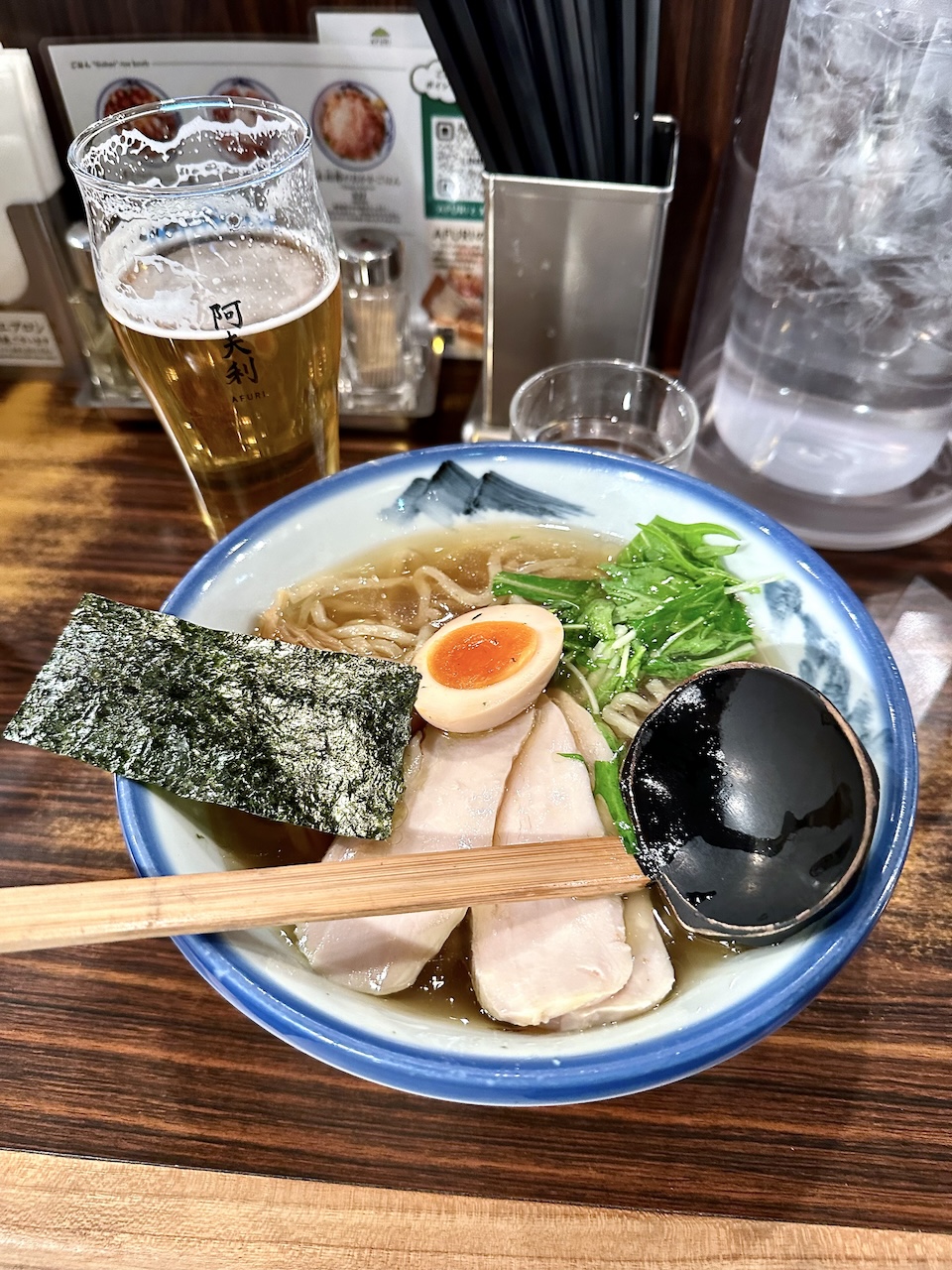
Tokyo Travel Guide: Shopping
Shopping in Tokyo is a vibrant and diverse experience, offering everything from traditional markets to high-end luxury shops selling international brands. Here are some highlights:
- Ginza: Known as Tokyo's upscale shopping district, Ginza features luxury boutiques, department stores, and flagship stores of renowned international brands.
- Harajuku: Famous for its eclectic fashion scene, Harajuku attracts trendsetters and fashion enthusiasts. Takeshita Street is particularly popular for its quirky boutiques, vintage shops, and unique street fashion.
- Shibuya: Shibuya is a shopping hub surrounded by department stores, fashion boutiques, and streetwear-oriented shops.
- Akihabara: Known as the electronics and anime district, Akihabara is a paradise for tech enthusiasts and fans of anime, manga, and video games.
- Asakusa Nakamise Shopping Street: Leading to Senso-ji Temple, Nakamise Street is lined with traditional stalls selling souvenirs, snacks, and crafts.
- Kappabashi Street: Located between Ueno and Asakusa, Kappabashi Street is known as kitchen town. The street is almost exclusively home to kitchenware shops that sell a large variety of items, including: cookware, knives, food, restaurant equipment and supplies, china, and more.
Vintage Shops:
- Vintage shops in Tokyo offer a wide range of second-hand clothing, including unique and one-of-a-kind pieces from different fashion eras. You can find everything from vintage kimonos to Western streetwear.
- Tokyo has a number of upscale second-hand stores like Vintage Qoo, Ragtag Harajuku, and AMORE. These establishments curate pre-owned designer goods, including clothing, handbags, and accessories from renowned luxury brands like Chanel, Fendi, Christian Dior, Louis Vuitton, and Hermes.
Top Shops for Vintage Designer in Tokyo >
Don Quijote:
Don Quijote, commonly known as "Donki," is a popular 24-hour discount store chain in Tokyo, recognized for its diverse product range, competitive pricing, and unique shopping experience. Offering everything from groceries and cosmetics to electronics and quirky items, the stores are bustling with activity and boast a distinctive atmosphere. Some locations, like the Akihabara store, are particularly known for their extensive selection of electronics and otaku-related merchandise. Don Quijote also provides tax-free shopping for tourists.
There is a Mega Donki in Shibuya, near the Shibuya Scramble Crossing. It's a large store, covering nine floors, selling everything from designer goods (we even saw Rimowa luggage and Fendi purses), to groceries, skincare products, souvenirs, and more. The store can be overwhelming and since it's open 24 hours a day, we recommend going late at night when it wasn't as crowded. We personally found it convenient for souvenir shopping, picking up Japanese KitKats, skincare products, and more to bring home with us, taking advantage of their tax-free shopping for purchases exceeding ¥5,000.
How to Navigate Your Way through the MEGA Don Quijote in Shibuya >

Tokyo Travel Guide: Transportation
Tokyo, a sprawling metropolis, can be a challenge for first-time visitors to navigate due to its size. However, the city boasts a reliable and affordable mass transit system, offering an efficient way to explore its diverse neighborhoods and attractions. Leveraging navigation apps like Google Maps proves immensely helpful for seamless and efficient travel through the city.
Airports:
Tokyo welcomes travelers through two main airports, seamlessly connected to the city center by efficient mass transit. Our journey to Japan began with United Airlines, landing at Narita Airport, providing a convenient gateway to the vibrant heart of Tokyo.- Haneda Airport (HND): Haneda Airport, Tokyo's bustling and closer gateway, accommodates an array of airlines, including ANA, Japan Airlines, Air Canada, Air France, American, British Airways, Cathay Pacific, China Airlines, Delta, Emirates, Hawaiian, Korean Air, Lufthansa, Qatar, Turkish Airlines, United, and more, offering convenient connectivity and global access.
- Narita Airport (NRT): Narita Airport, a major international hub serving Tokyo, accommodates a diverse range of airlines, including but not limited to Air Canada, ANA, Lufthansa, Swiss, United, Air France, Delta, Korean Air, WestJet, ZIPAIR, Alaska Airlines, American, British Airways, Cathay Pacific, Emirates, Hawaiian, Iberia, Qantas, Qatar, KLM, and Aeromexico.
Transportation To/From Airports:
Haneda
- Since our arrival and departure didn't involve Haneda Airport, we can't provide firsthand insights into transportation to and from Tokyo. However, the Tokyo Cheapo website offers a comprehensive outline of transportation options, providing valuable information. Check it out on the Tokyo Cheapo website for detailed guidance.
Narita
- Narita Express Train (N'EX): The Narita Express (N'EX) is a swift and efficient train service connecting Narita International Airport to Tokyo. Renowned for its punctuality and comfort, N'EX offers a seamless journey with spacious seating, luggage space, and onboard services. Travelers can enjoy a direct route to major Tokyo stations, making it a convenient and popular choice for airport transportation.
The Narita Express (N'EX) typically takes around 60 to 90 minutes to travel from Narita International Airport to Tokyo Station, depending on the specific train type and stops. The frequency of N'EX trains varies, with departures approximately every 30 minutes during peak hours. Ticket prices for the Narita Express can also vary based on factors such as seat class and whether you purchase a reserved or non-reserved seat. As of January 2024, a one-way ticket for an unreserved seat is 3,070 yen to Tokyo Station from Narita Airport (and vice versa), while reserved seats cost slightly more. A one-way ticket for an unreserved seat is 3,250 yen to Shibuya, Shinjuku, and Shinagawa stations. N'EX makes stops at major Tokyo stations such as Tokyo Station, Shibuya, Shinjuku, and Yokohama, providing convenient access to various parts of the city. However, for the most accurate and up-to-date information on schedules, ticket prices, and stops, we recommend checking the official website of the East Japan Railway Company (JR East) or contacting their customer service. - Narita Skyliner: A popular high-speed train that connects Narita International Airport to various stations in Tokyo, including Ueno and Nippori. The Skyliner offers a swift and comfortable journey, typically taking around 36 to 41 minutes to reach Ueno Station. You can conveniently purchase your Skyliner ticket in advance from outside Japan by visiting the Skyliner e-Ticket Website. One-way adult tickets start at 2,300 yen, ensuring a seamless and efficient journey from Narita International Airport to Tokyo.
-
Taxi: Taking a taxi to/from Narita International Airport to Tokyo can cost around 20,000 to 30,000 yen or more, depending on your exact destination within Tokyo. The travel time by taxi typically ranges from 60 to 90 minutes, but it can vary based on traffic conditions and the specific location in Tokyo. While taxis offer door-to-door convenience, they are generally more expensive compared to public transportation options like the Narita Express (N'EX) train.
- Public Bus: Opting for the public bus from Narita to the city center is an affordable choice, with approximate ticket costs ranging from 1,000 to 3,000 yen. However, travelers should be aware that service may experience delays due to road conditions and weather, making it important to factor in potential travel variations.
Access to Central Tokyo via Narita Airport >
How to Catch the Narita Express (N'EX) >
How to Catch the Skyliner >
Local Transit:
- Subways & Local Trains: Navigating Tokyo's bustling metropolis is best accomplished through its efficient subway and train network. Offering swift and reliable transportation, the subways and trains provide seamless connectivity to key destinations, making them the optimal choice for exploring the diverse neighborhoods, cultural landmarks, and vibrant attractions that Tokyo has to offer.
- Buses: Tokyo's bus system is extensive and serves as an alternative mode of transportation to complement the city's well-developed subway and train networks. While buses are not as commonly used as trains for inner-city commuting, they provide access to areas that may not be covered by rail lines. The bus system is particularly convenient for exploring neighborhoods, historical sites, and local attractions. Fares are generally distance-based, and buses accept various payment methods, including IC cards like Suica and Pasmo. While the subway and trains are the primary choice for efficient urban travel, buses offer a more scenic and leisurely option for discovering Tokyo's diverse landscapes.
- Taxis: Taxis in Tokyo are a safe and convenient mode of transportation, particularly outside of rush hours, which typically occur during the morning from 8:00 AM to 9:00 AM and in the evening from 6:00 PM to 8:00 PM. While taxis provide door-to-door service, offering comfort and ease, they are not a budget-friendly option for getting around the city. Taxi stands are conveniently located outside train stations and bus terminals, and you can easily flag down taxis from the side of the road, ensuring a hassle-free experience during your Tokyo travels. Remember, tipping is not a part of Japanese culture. Therefore, in Japan, it's customary not to tip taxi drivers, even when traveling with luggage.
JR Rail Pass & Shinkansen Tickets:
For travelers looking to venture from Tokyo to other cities in Japan or embark on day-trips, the Shinkansen is a highly efficient and popular mode of transportation. Departing primarily from Tokyo Station and occasionally from Shinagawa Station, these high-speed trains offer swift connections, making them the go-to choice for seamless and rapid inter-city travel experiences.
Looking for more information regarding the JR Rail Pass or purchasing Shinkansen tickets? Check out the 'Trains' tab on our Japan overview page.
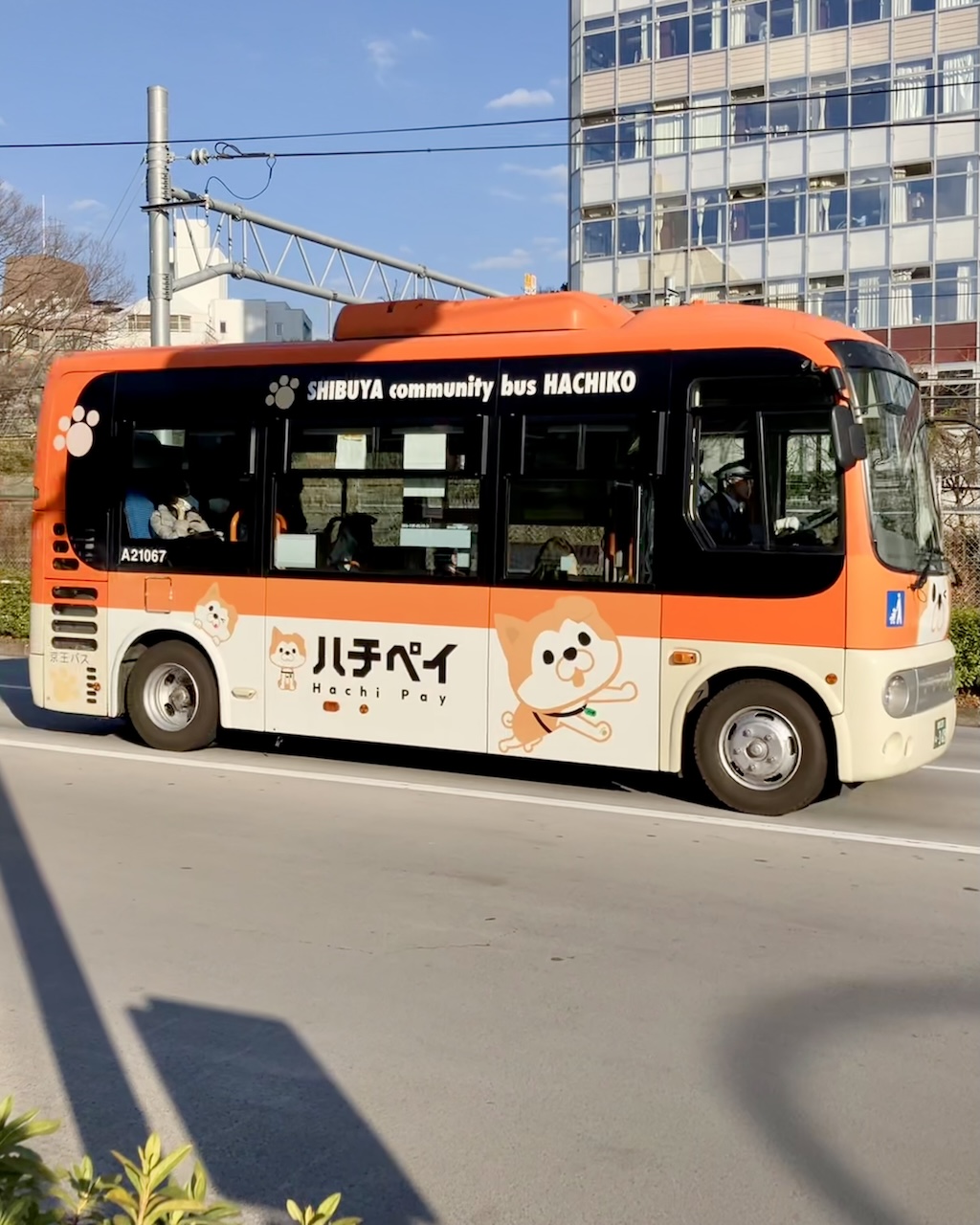
Why we loved Tokyo
Our time in Tokyo was nothing short of enchanting, and we found ourselves enamored by all Tokyo had to offer. Tokyo's efficient transportation system, exemplified by the punctuality of its trains and the ease of navigating its bustling streets, made getting around a seamless experience. Whether we were exploring the historic Senso-ji Temple in Asakusa, taking in panoramic views from the 47th floor observation decks of Shibuya Sky, or wandering amidst the neon billboards that illuminate the city's vibrant neighborhoods, we were constantly in awe of Tokyo's dynamic energy and diversity.
What truly struck us about Tokyo was its juxtaposition of ancient temples and shrines nestled amongst the towering skyscrapers, symbolizing the city's rich cultural heritage alongside its forward-thinking innovation. From the serene beauty of Shinjuku Gyoen National Garden to the eclectic charm of vintage shopping in Harajuku, Tokyo offered a wealth of experiences that celebrated its rich history and contemporary flair.
The city's vast array of attractions ensured that there was never a dull moment during our visit. From well-curated museums like the Tokyo National Museum, to the bustling Tsukiji Outer Market, upscale cocktail bars, and phenomenal eateries, we enjoyed every minute of our time in Tokyo. As we bid farewell to Tokyo, we found ourselves already dreaming of our next trip to Tokyo to see all of the attractions we missed during our first visit.
Tokyo Neighborhoods
- Shibuya & Harajuku
- Ginza
- Shinjuku
- Asakusa
- Marunouchi
- Ueno
- Chiyoda City & Akihabara
- Roppongi
- Odaiba & Tokyo Bay
Shibuya • 渋谷 • しぶや
Shibuya, Tokyo's dynamic and iconic neighborhood, is filled with vibrant energy and is a hub of youth culture. Renowned for the world-famous Shibuya Scramble Crossing, the district is full of towering neon billboards and serves as a major transportation hub with Shibuya Station at its core. As the sun sets, Shibuya transforms into a lively nightlife destination, featuring an array of bars, nightclubs, and entertainment options. With its entertainment options, dining variety, and proximity to Shinjuku, Shibuya encapsulates the essence of Tokyo's modernity, youthfulness, and urban excitement.
Best Shops in Shibuya >
Best Restaurants Near Shibuya Scramble Crossing >
Top Things to Do in Shibuya >
Shibuya Station Map >
Harajuku • 原宿 • はらじゅく
Harajuku, a lively and eclectic neighborhood within Shibuya, is renowned for its avant-garde fashion, vibrant street culture, and diverse shopping scene. Takeshita Street, the focal point of Harajuku, is lined with quirky boutiques, trendy fashion stores, and unique cafes, drawing fashion enthusiasts and curious visitors alike. The neighborhood is a hub for creative expression, where individuals showcase unique styles, contributing to its reputation as a fashion-forward district. Takeshita Street's proximity to Harajuku Station and the larger Shibuya district ensures easy access, making it a must-visit destination for those seeking a dynamic blend of fashion, culture, and youthful energy in Tokyo.
Harajuku Visitor Guide >
50 Things to Do in Harajuku >
Takeshita Street Guide >
Harajuku Shopping Guide >
12 Best Street Food & Snacks in Harajuku >

Ginza • 銀座 • ぎんざ
Ginza, Tokyo's upscale district within Chūō City, is synonymous with luxury shopping, gourmet dining, and a refined urban ambiance. Renowned as one of the world's most exclusive shopping destinations, Ginza showcases high-end boutiques, flagship stores, and designer labels. The district comes alive with dazzling lights and architectural elegance, offering a seamless blend of modernity and tradition. Beyond shopping, Ginza is celebrated for its culinary scene, featuring Michelin-starred restaurants, chic cafes, and upscale cocktail bars. Ginza is also centrally located (with Tokyo Station, Ueno, Asakusa, and Tsukiji Outer Market, and the Imperial Palace all nearby), making it a convenient spot to stay within Tokyo.
Ginza Guide >
Where to Eat in Ginza >
Luxury Shopping in Ginza >
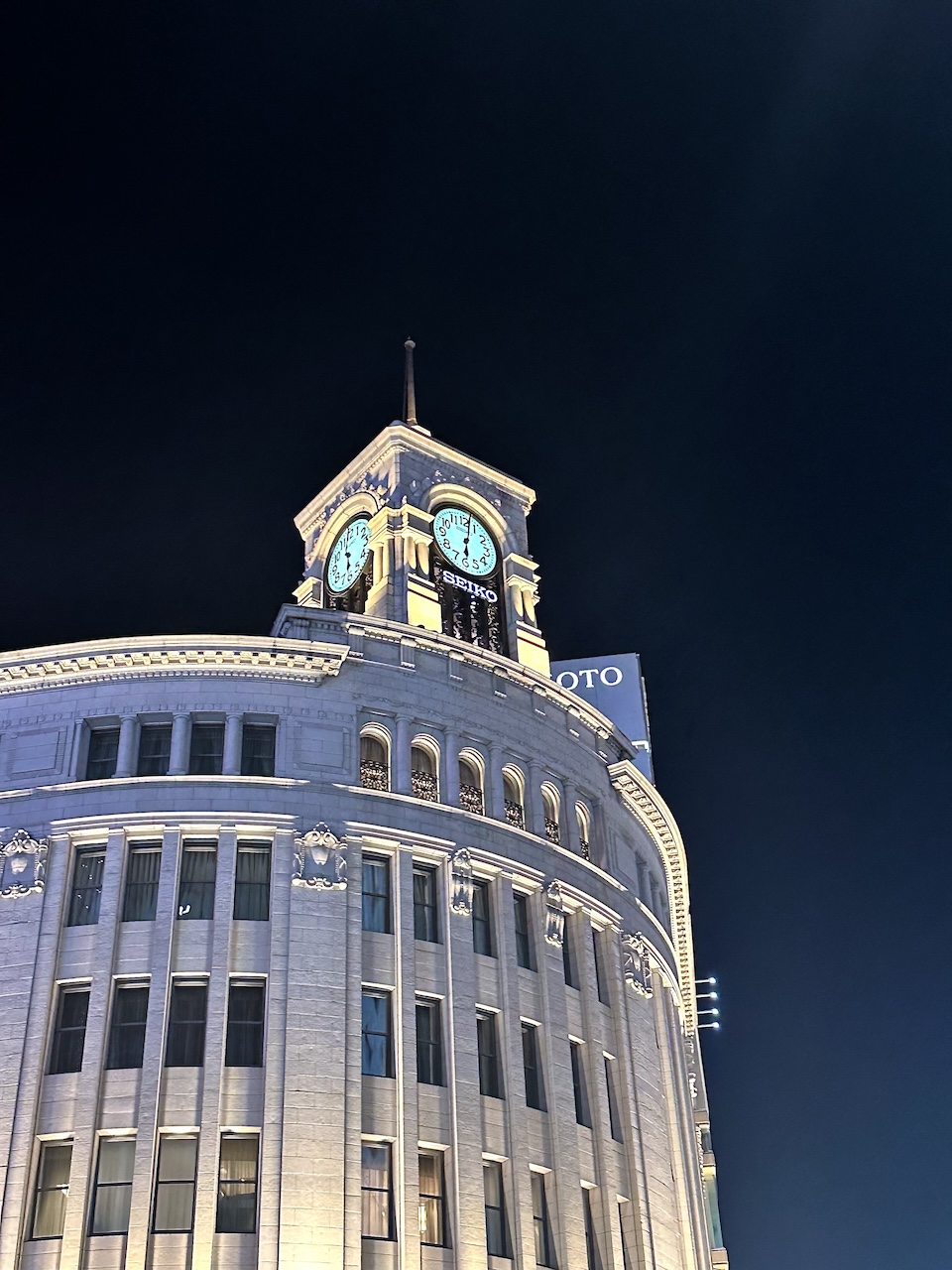
Shinjuku • 新宿 • しんじゅく
Shinjuku, a bustling district in Tokyo, is a multifaceted urban hub known for its vibrant energy and diverse offerings. Home to the busiest train station in the world, Shinjuku Station, the area boasts a seamless blend of business, entertainment, and shopping. Skyscrapers define the skyline, showcasing the modernity of Tokyo, while areas like Golden Gai offer a lively nightlife scene with bars, clubs, and entertainment options. Shinjuku Gyoen National Garden provides a serene contrast, offering a peaceful retreat with traditional Japanese, English, and French garden landscapes. The district is also a shopping haven, featuring department stores and luxury boutiques. With its contrasting elements of modernity, entertainment, and green spaces, Shinjuku stands as a dynamic microcosm of Tokyo's diverse and ever-evolving character.
Shinjuku Area Guide >
10 Best Places to Eat Near Shinjuku Station >
Shinjuku Station Map >
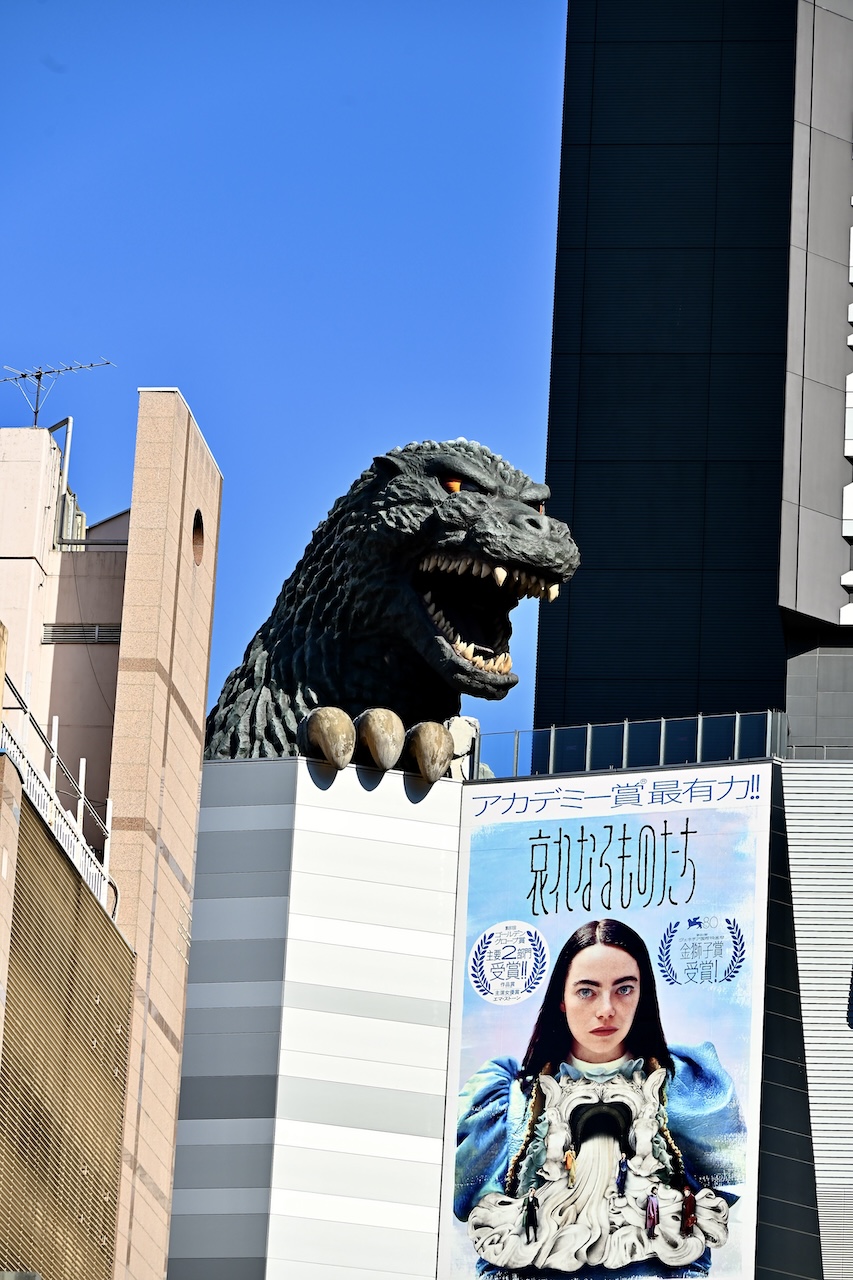
Asakusa • 浅草 • あさくさ
Asakusa, a historic neighborhood in Tokyo, is characterized by its cultural richness and iconic landmarks. At the heart of Asakusa stands Senso-ji, Tokyo's oldest Buddhist temple, attracting visitors with its vibrant Thunder Gate and Nakamise-dori shopping street. The area exudes a traditional ambiance, offering glimpses of Tokyo's past. Asakusa is also known for the imposing Tokyo Skytree, providing panoramic views of the city. Transit in the neighborhood is facilitated by Asakusa Station, a major transportation hub connecting various train lines. Its accessibility, coupled with the blend of historical charm and modern attractions, makes Asakusa a captivating destination for those exploring Tokyo's diverse cultural landscape.
Asakusa Area Guide >
10 Best Street Food & Snacks in Asakusa >
Top Restaurants in Asakura >
Asakusa Shopping Guide >
Asakusa Station Map >

Marunouchi (Tokyo Station) • 丸の内 • まるのうち
Marunouchi, a central business district in Tokyo, stands out for its upscale atmosphere, modern architecture, and proximity to key landmarks. Nestled between Tokyo Station and the Imperial Palace, this area boasts a dynamic mix of skyscrapers housing corporate offices, luxury hotels, and high-end retail establishments. The district offers a refined shopping experience with prestigious brands, chic boutiques, and gourmet dining options. Its allure is further heightened by its close connection to historical sites, including the Imperial Palace East Gardens, creating a sophisticated blend of business, culture, and elegance in the heart of Tokyo.
Renowned as one of Tokyo's major financial districts, Marunouchi is home to the headquarters of numerous major Japanese and international corporations, financial institutions, and business offices. The district's modern skyscrapers, corporate headquarters, and strategic proximity to key financial institutions contribute to its status as a prominent business and financial hub in Tokyo. Marunouchi's strategic location near Tokyo Station and its well-planned urban development have made it a central and prestigious area for businesses, solidifying its reputation as a key financial district in the city.
10 Best Things to Do in Marunouchi >
Marunouchi & Tokyo Station Area Guide >
Tokyo Station Map >
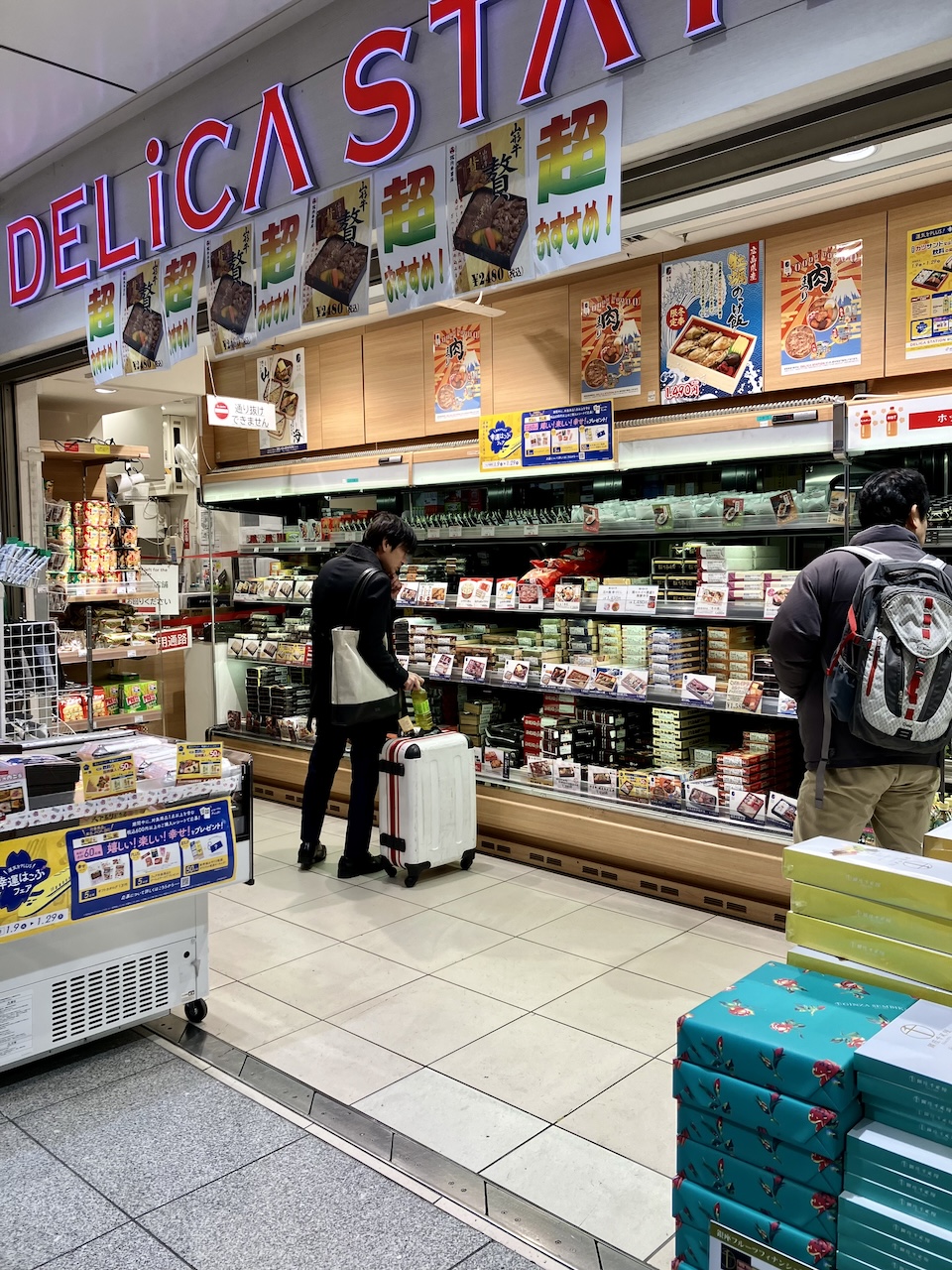
Ueno • 上野 • うえの
Ueno, a vibrant neighborhood in Tokyo, offers a diverse blend of cultural, recreational, and natural attractions. Home to Ueno Park, this expansive green space features cherry blossoms in spring, museums, and a zoo, making it a popular destination for locals and tourists alike. The Ueno Zoo, Japan's first, houses a diverse collection of animals (including giant pandas). The area surrounding Ueno Station is a bustling commercial district with shopping streets, restaurants, and entertainment options. Ueno is also known for its museums, including the Tokyo National Museum and the National Museum of Western Art, showcasing an extensive range of cultural artifacts and artworks. With its dynamic mix of nature, culture, and connectivity through a large train station, Ueno stands as a multifaceted destination in Tokyo, providing both residents and visitors easy access to the city and beyond, including convenient connections to the airport.
Ueno Travel Guide >
Tripadvisor Best Restaurants in Ueno >
Ueno Park Guide >
Ueno Station Map >
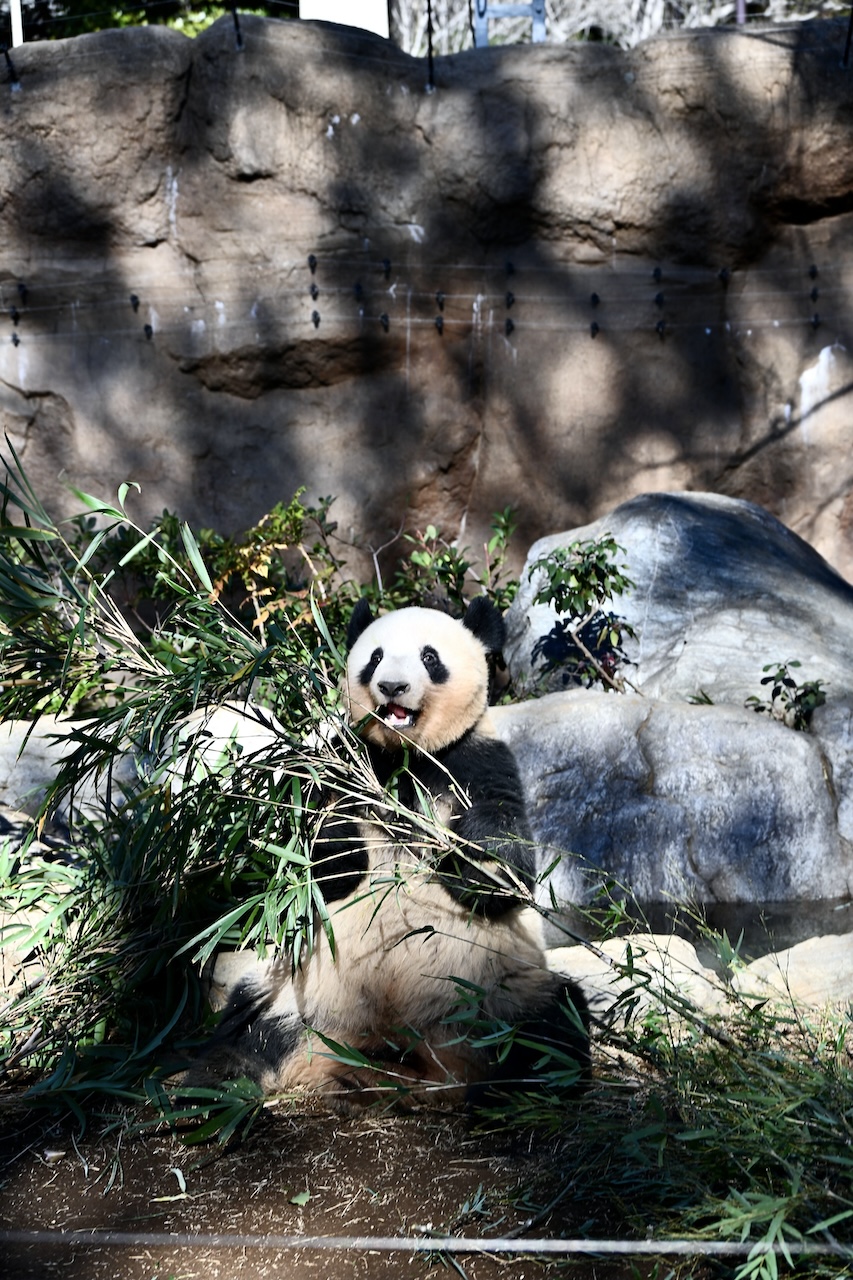
Chiyoda City • 千代田 • ちよだ
Chiyoda City, a special ward in Tokyo, serves as the political nucleus of Japan. Chiyoda City houses the Imperial Palace (the official residence of the Emperor) and the National Diet Building, where the country's legislative body convenes. This ward is steeped in history, featuring the Edo Castle ruins within the Imperial Palace East Gardens and serving as the backdrop to significant cultural institutions. Beyond its political and historical significance, Chiyoda boasts a thriving business district marked by corporate offices and high-rise buildings.
8 Spots You Don't Want to Miss in Chiyoda >
The Ultimate Guide to Chiyoda >
Akihabara • 秋葉原 • あきはばら
Akihabara, often referred to as the electronic and anime mecca of Tokyo, is a vibrant and energetic neighborhood within Chiyoda City known for its unique blend of technology, pop culture, and entertainment. The district is a haven for tech enthusiasts, offering a multitude of electronics stores, gaming centers, and anime shops. Akihabara's streets are lined with colorful billboards, showcasing the latest gadgets and anime characters. Akihabara is not only a shopping paradise but also a cultural phenomenon, reflecting the global appeal of Japanese pop culture. The neighborhood is easily accessible via Akihabara Station, making it a must-visit destination for those fascinated by the intersection of technology and otaku culture.
Akihabara Area Guide >
15 Best Things to Do in Akihabara >
Akihabara Shopping Guide >
Top 15 Restaurants in Akihabara >
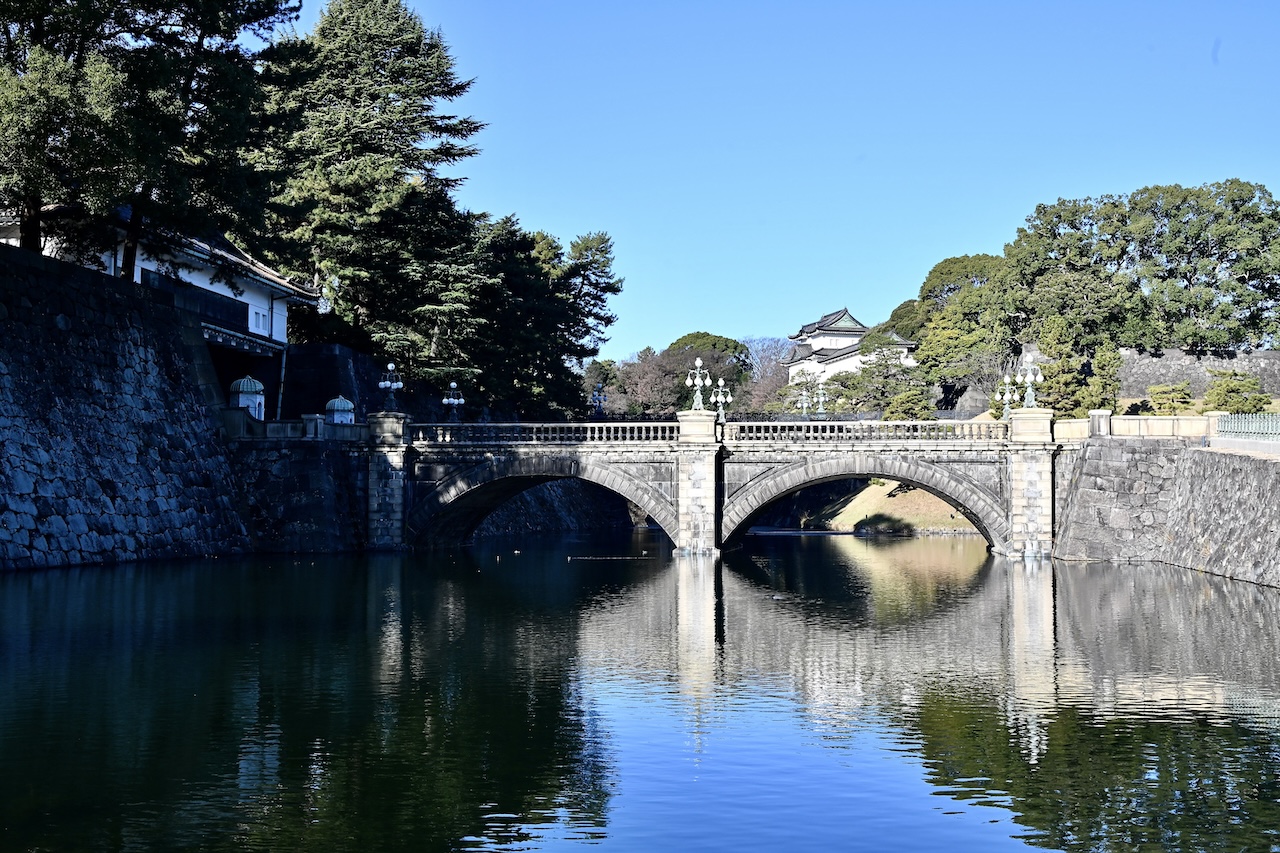
Roppongi • 六本木 • ろっぽんぎ
Roppongi, meaning "six trees" is a dynamic neighborhood in Tokyo synonymous with a vibrant nightlife scene, upscale dining, and cultural attractions. By day, the area offers a mix of contemporary architecture, shopping complexes like Roppongi Hills, and art museums, including the Mori Art Museum. As evening descends, Roppongi transforms into a nightlife hub with an array of bars, clubs, and entertainment options catering to diverse tastes. The district's accessibility is enhanced by Roppongi Station, and its central location makes it a popular destination for both locals and international visitors seeking a cosmopolitan experience in Tokyo.
21 Best Things to Do in Roppongi >
15 Well Known Restaurants in Roppongi >
Roppongi Area Guide >
Bars & Clubs in Roppongi >
Roppongi Art Guide >
Odaiba & Tokyo Bay • お台場 • おだいば
Odaiba, situated on a man-made island in Tokyo Bay, is a futuristic and entertainment-rich neighborhood offering a diverse range of attractions. Connected to the mainland by the Rainbow Bridge, Odaiba is known for its striking architecture and waterfront vistas. Odaiba's beachfront areas, like Odaiba Seaside Park, provide a relaxing contrast to the bustling city. Tokyo Bay, surrounding Odaiba, offers stunning views of the city skyline. Accessible by various transportation modes, including the Yurikamome Line and water buses, Odaiba stands as a captivating blend of modernity, entertainment, and scenic beauty along Tokyo Bay.
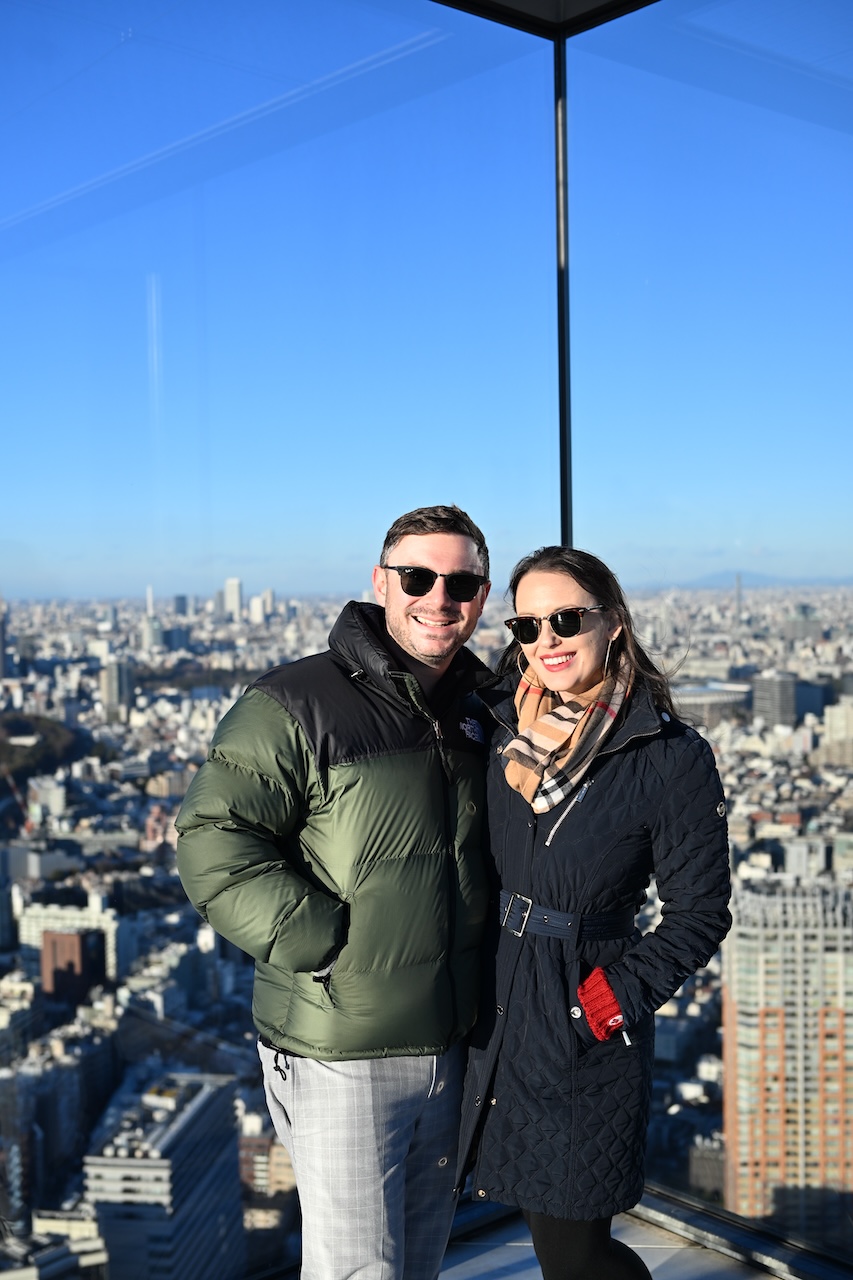
Our take on Tokyo
We divided our time in Tokyo into two stays, totaling 7 nights in the city. During the first stint, we spent 3 nights at The Gate Hotel Tokyo in Ginza. We selected this hotel for its convenient location near Tokyo Station (just one subway stop away). Ginza, being centrally located, offered close access to other neighborhoods including Ueno, Asakusa, and Chou City. While it still gave off big city vibes, it felt more upscale and more peaceful than busy Shibuya. Furthermore, there was an abundance of dining and upscale shopping opportunities in Ginza. It was by far our favorite place to stay in Tokyo.
For our second stint, we opted for 4 nights at the Hotel Indigo Tokyo in Shibuya, enjoying the close access to Shibuya Station. Shibuya was everything we expected from Tokyo - neon lights, chaotic streets, and crowds. We enjoyed the proximity to Harajuku, the Meiji Jingu Shrine, and Shinjuku. Shibuya itself is home to an array of activities and vibrant surroundings, so staying here made perfect sense for our first time in Japan.
Spending a total of 7 nights in Tokyo was ideal for a first time visit to Tokyo, although one could easily stay for weeks and still not see everything. This timeframe allowed us to explore the city's charms and take advantage of a few day-trips, providing a glimpse of the diverse offerings Japan has to offer beyond its bustling capital.
Looking for more Tokyo content?
Check out the Jetset Seeker Blog!
Popular Day-Trips
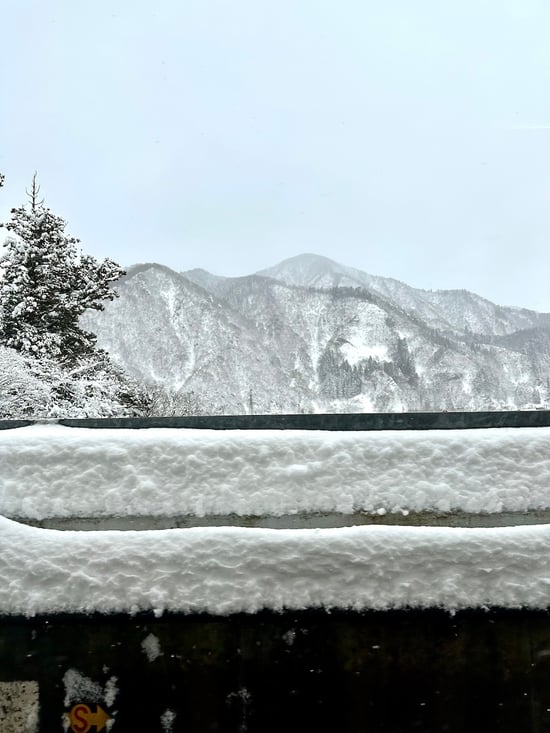
Yuzawa (Niigata)
Ski & Snowboard in the Japanese Alps
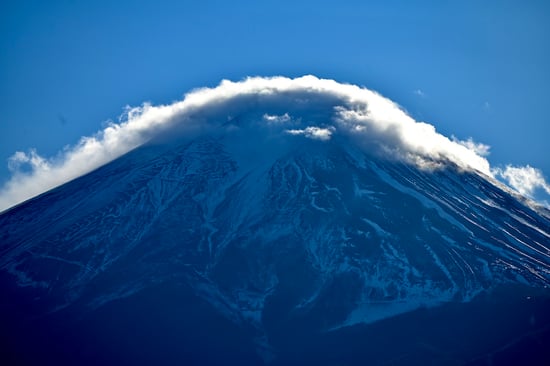
Mt. Fuji & Fuji Five Lakes
See Majestic Mt. Fuji Up-Close
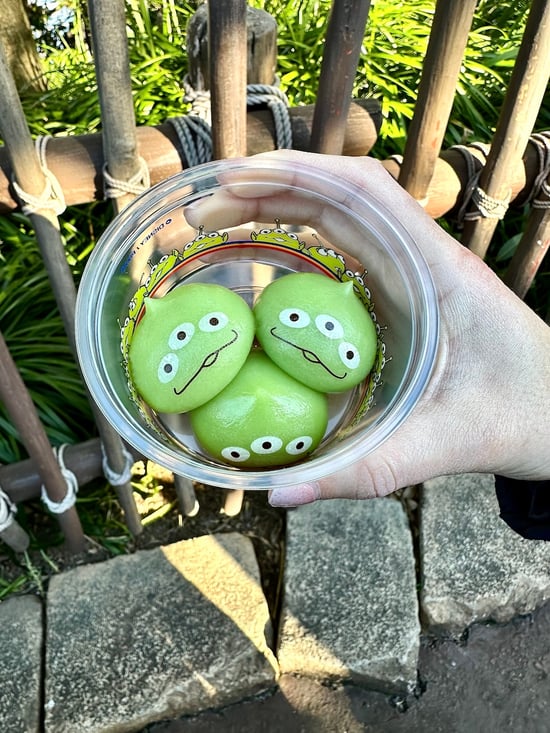
Tokyo Disney Resort
Experience Disney Magic
Our Tokyo Travel Guide & Trip Planning Resources
Curious about the resources that shaped our Tokyo journey? Dive into the links below for additional insights and valuable information we used to plan our own unforgettable trip.
- Lonely Planet Japan 17th Edition (2022) >
- Trip Advisor Things to Do in Tokyo >
- japan-guide.com (Tokyo) >
- Time Out Tokyo >
Looking for more information on Japan? From booking Shinkansen tickets, to general etiquette, popular souvenirs, and more, check out our Japan Travel Guide.





What other honeymooners say


Laboris nisi ut aliquip ex ea commodo consequat. Duis aute irure dolor in reprehenderit in voluptate velit esse cillum dolore eu fugiat nulla pariatur. Excepteur sint occaecat cupidatat non proident, sunt in culpa qui officia deserunt mollit anim id est laborum.”

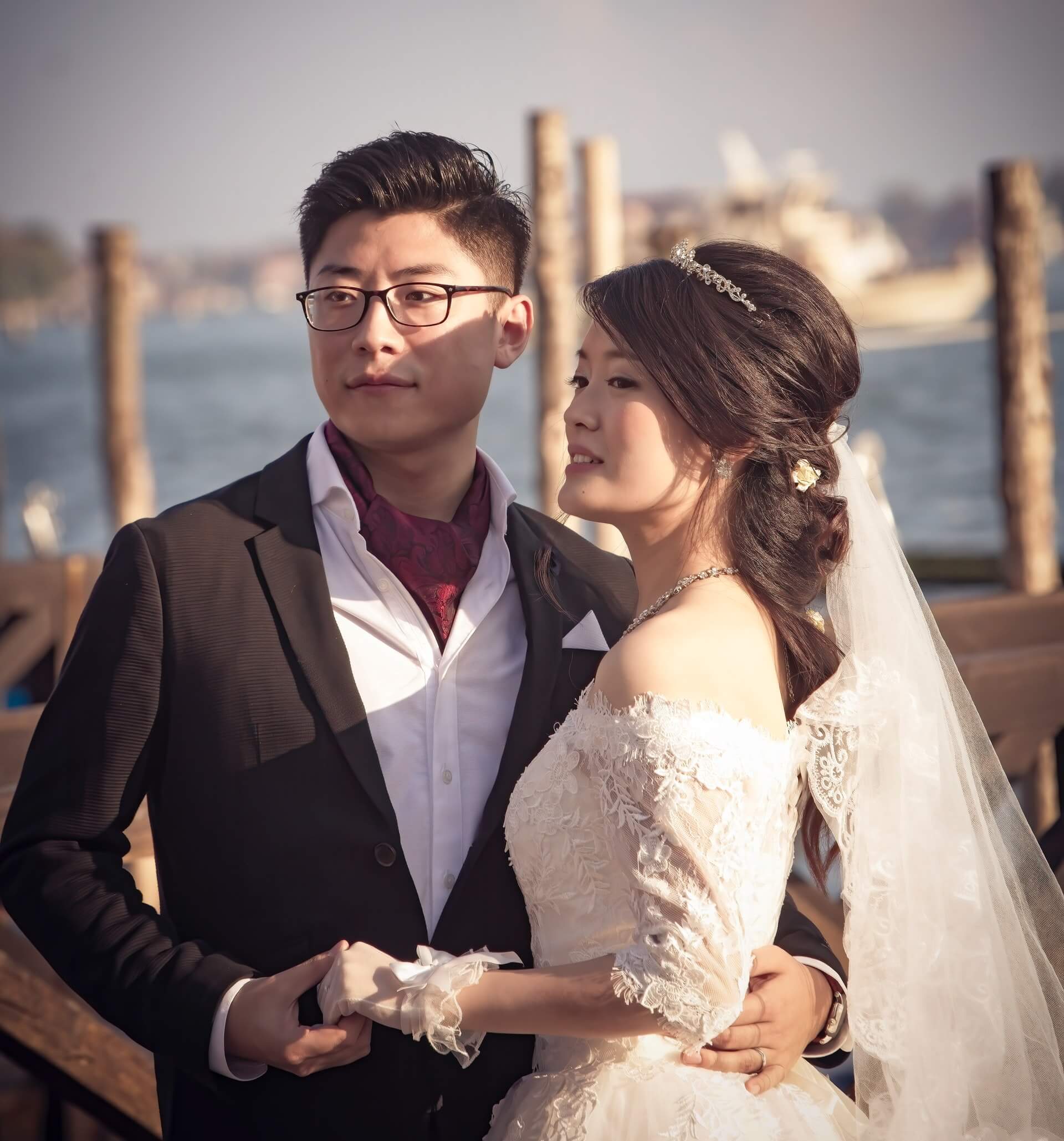
Laboris nisi ut aliquip ex ea commodo consequat. Duis aute irure dolor in reprehenderit in voluptate velit esse cillum dolore eu fugiat nulla pariatur. Excepteur sint occaecat cupidatat non proident, sunt in culpa qui officia deserunt mollit anim id est laborum.”
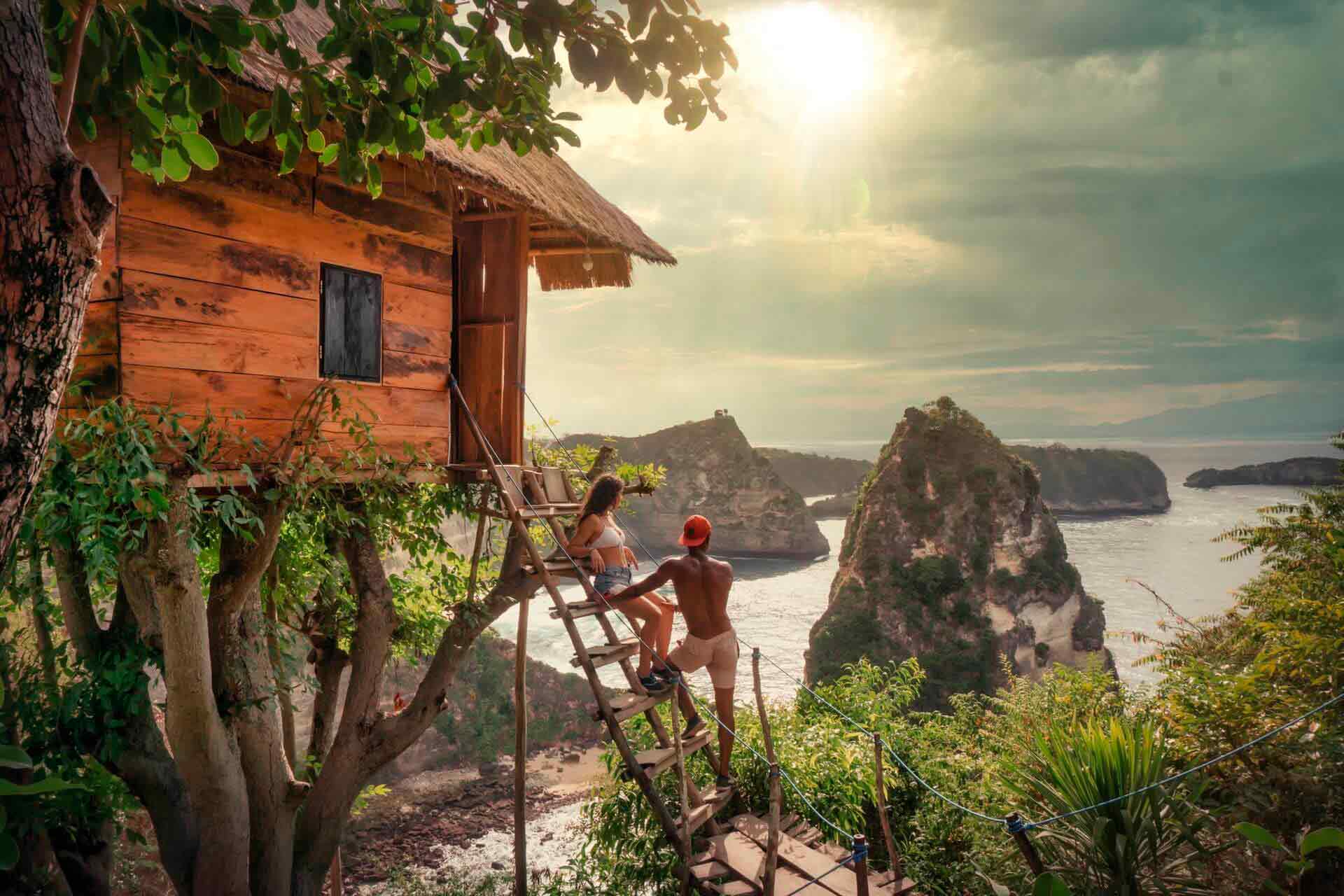
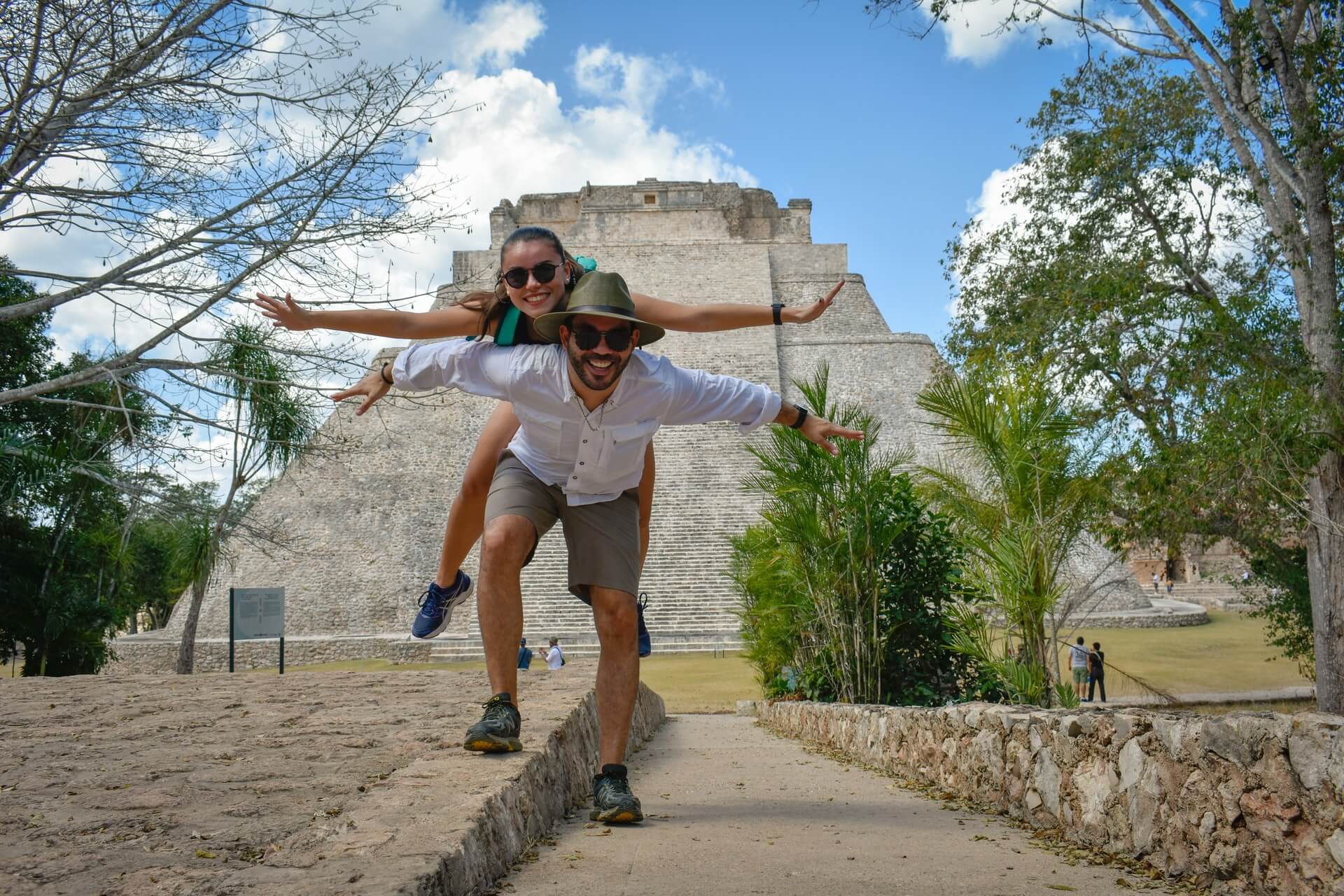
Laboris nisi ut aliquip ex ea commodo consequat. Duis aute irure dolor in reprehenderit in voluptate velit esse cillum dolore eu fugiat nulla pariatur. Excepteur sint occaecat cupidatat non proident, sunt in culpa qui officia deserunt mollit anim id est laborum.”
Tokyo Itineraries


Ready for the experience of a lifetime?
As passionate travelers, we're dedicated to sharing our insights to help you craft the trip of a lifetime. If you're seeking specific information regarding one of the above listed destinations or interested in personalized itineraries and trip planning, reach out to us. Let's turn your travel dreams into unforgettable realities.
%20(1).png?width=3690&height=2079&name=Jetset%20Seeker%20Logo%20(Banner)%20(1).png)






